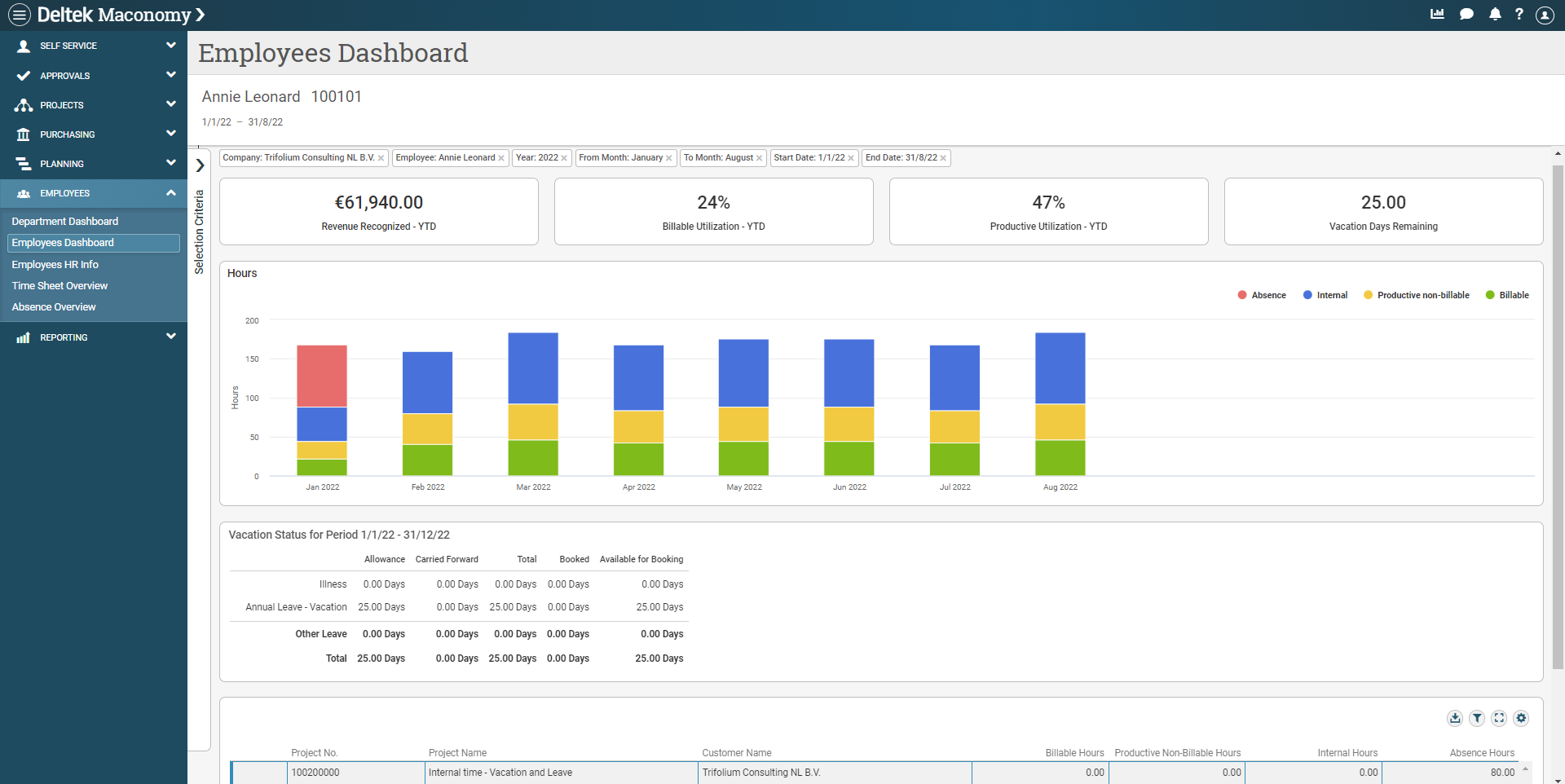
The employee can view the employee performance in a dashboard.
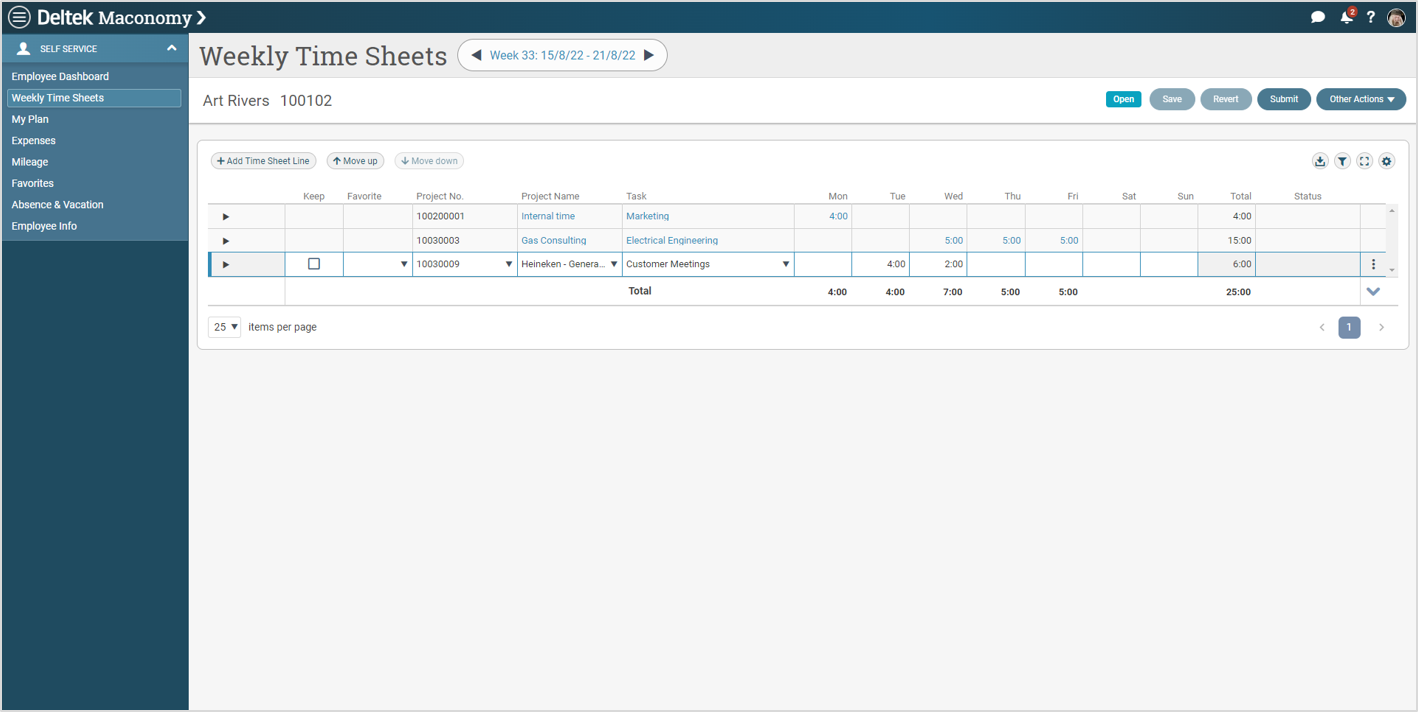
The employee can register time via the web-based UI, and bookings from resource plans will appear here. You can use keep or favories to make it easier to remember the right projects.
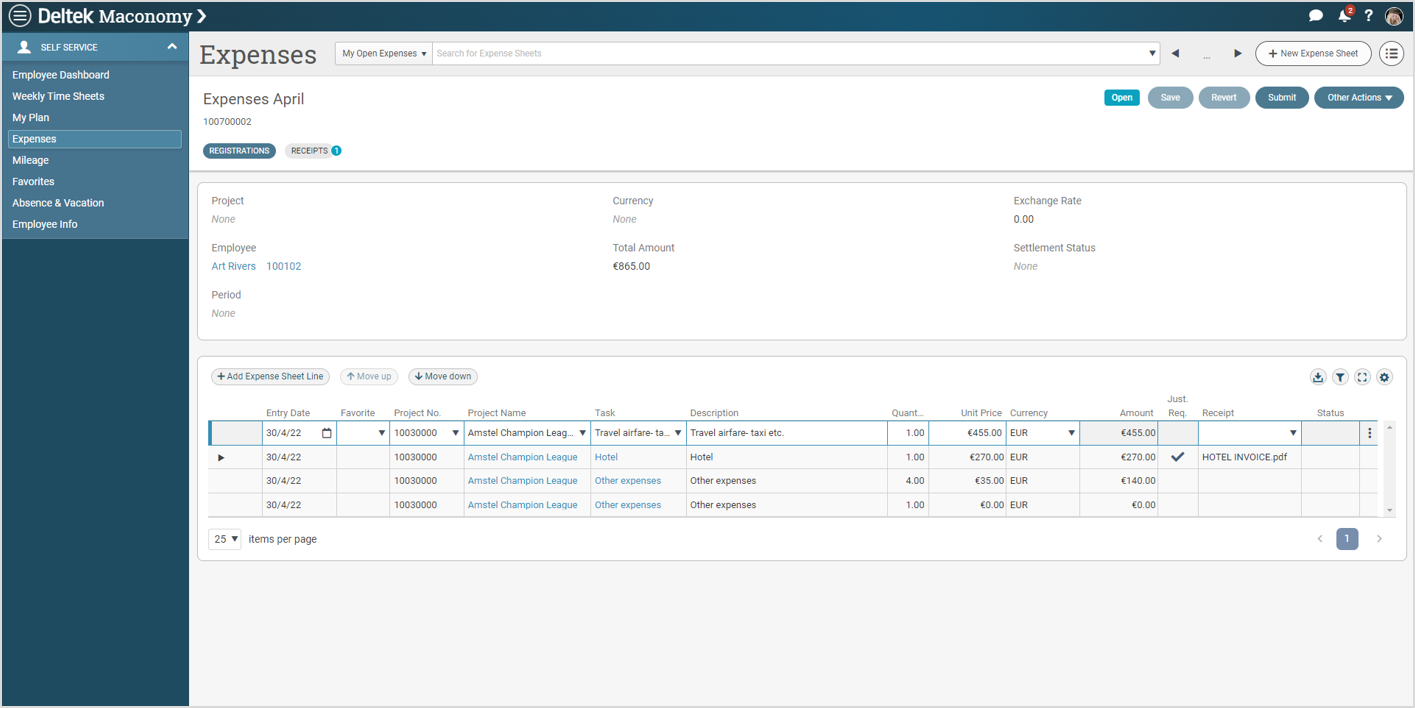
Employees can register and capture own expenses – and the solution supports full multicurrency reporting with conversion to company currency using the mobile app you can use OCR recognitions for receipts.
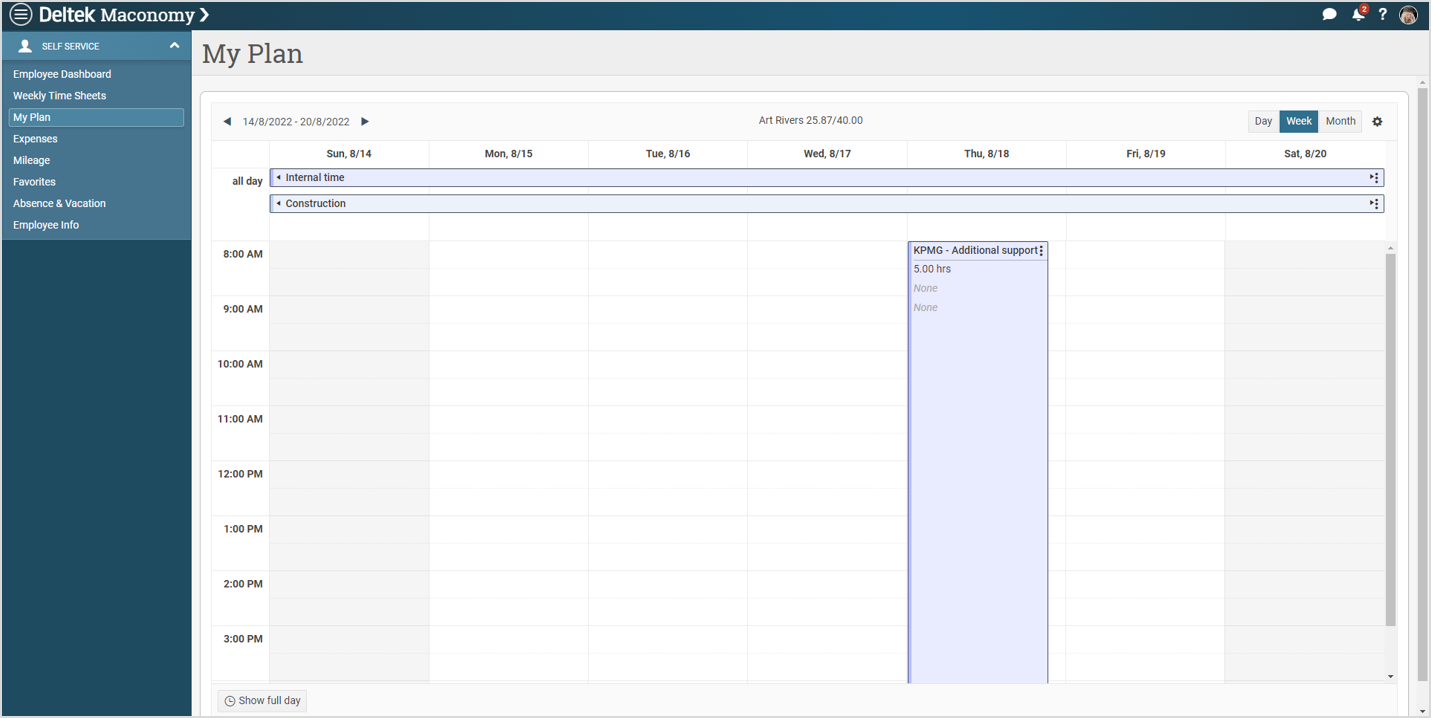
The employee will see their own bookings in my plan.
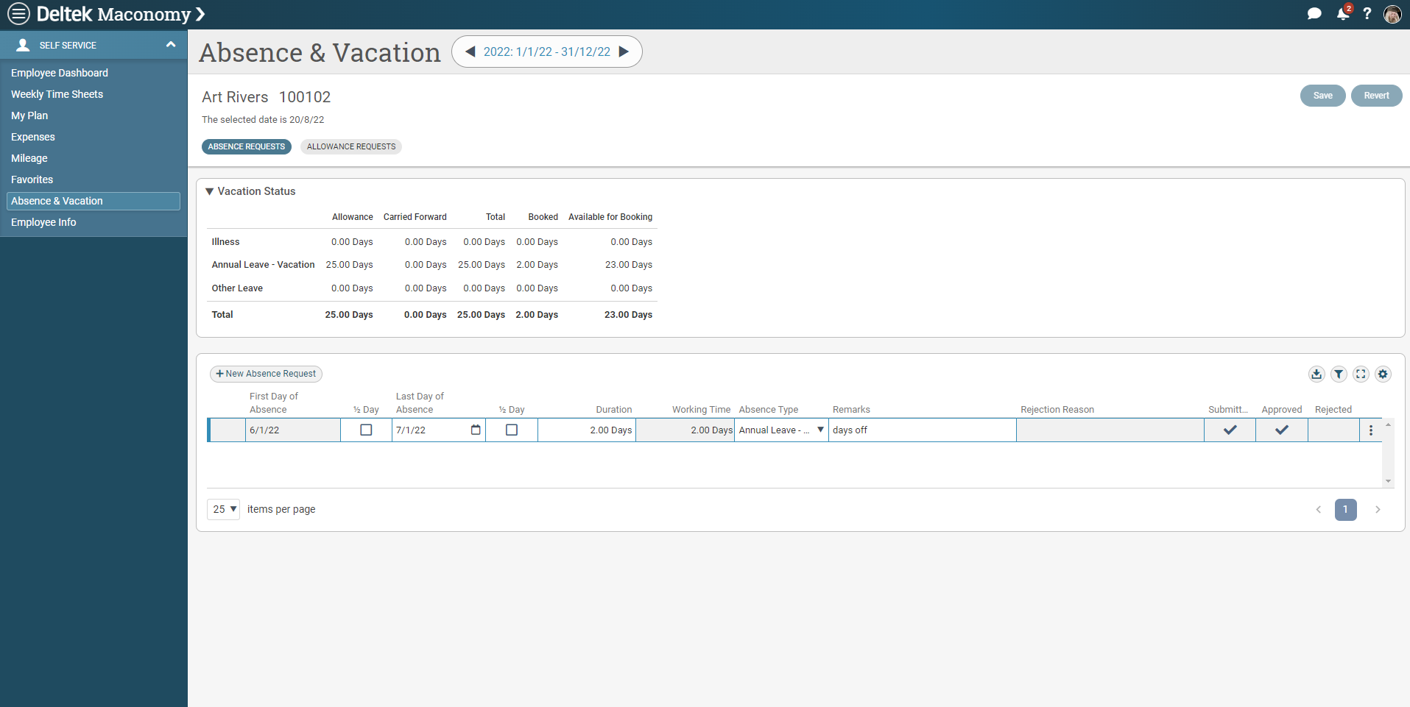
Employees can submit absence and vacation requests, which will then go into a flow to his / her supervisor and also flow into the resource plan.
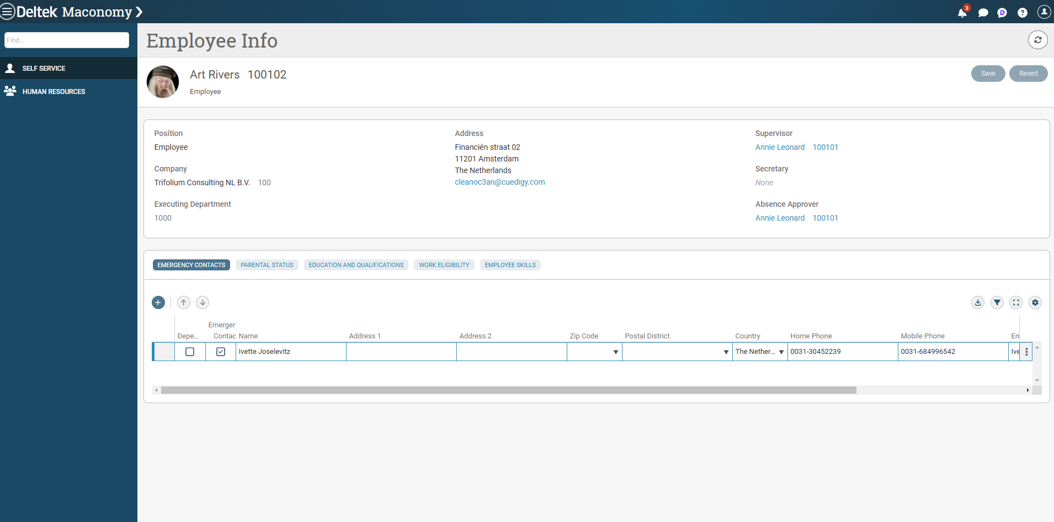
Employees can view – and if preferred also update own HR info – such as address, skills, education etc.

In the resource overview you get a full view of your resources and in the grid you see key information about them, and to the right in the color overview you get full transparency of there availability – in this case on a weekly basis, but can be switched to day or month view.
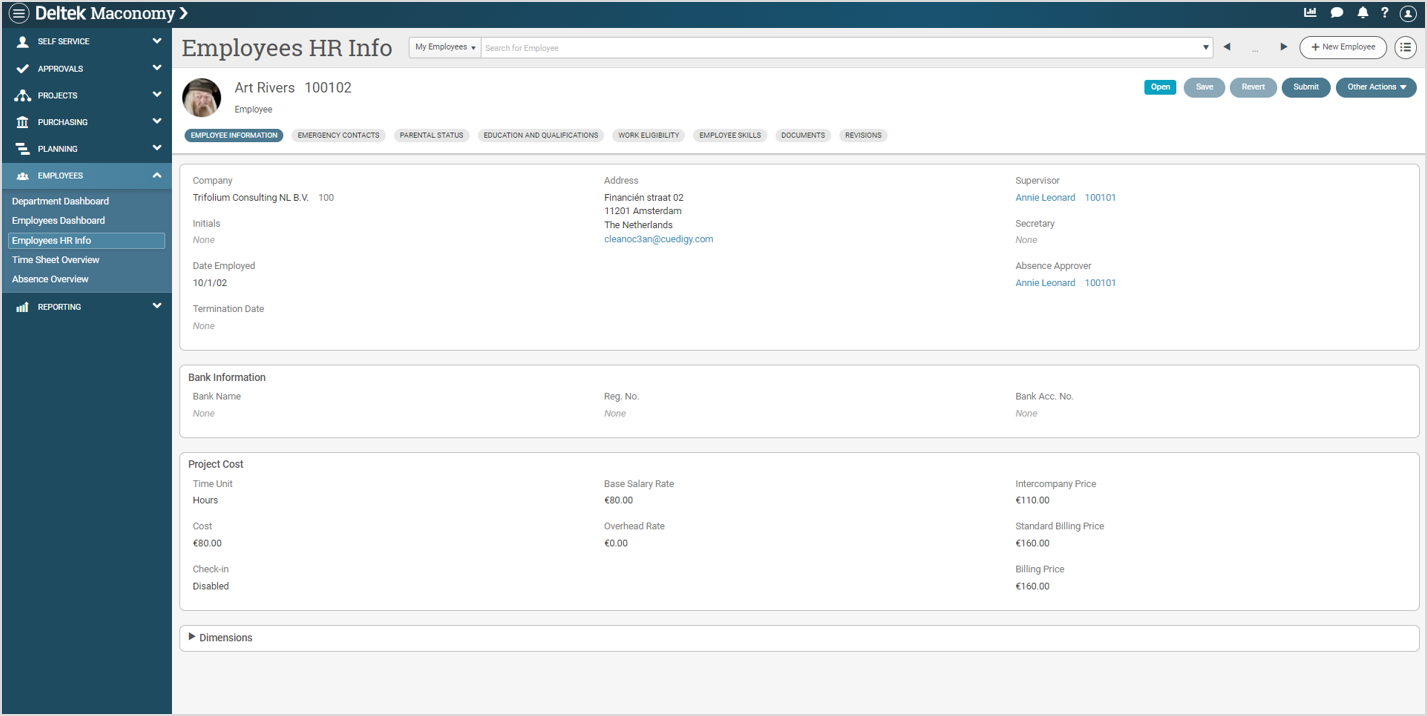
The Department manager has access to all his / her employees in the team and can see and maintain key information about the employee, including employee skills.
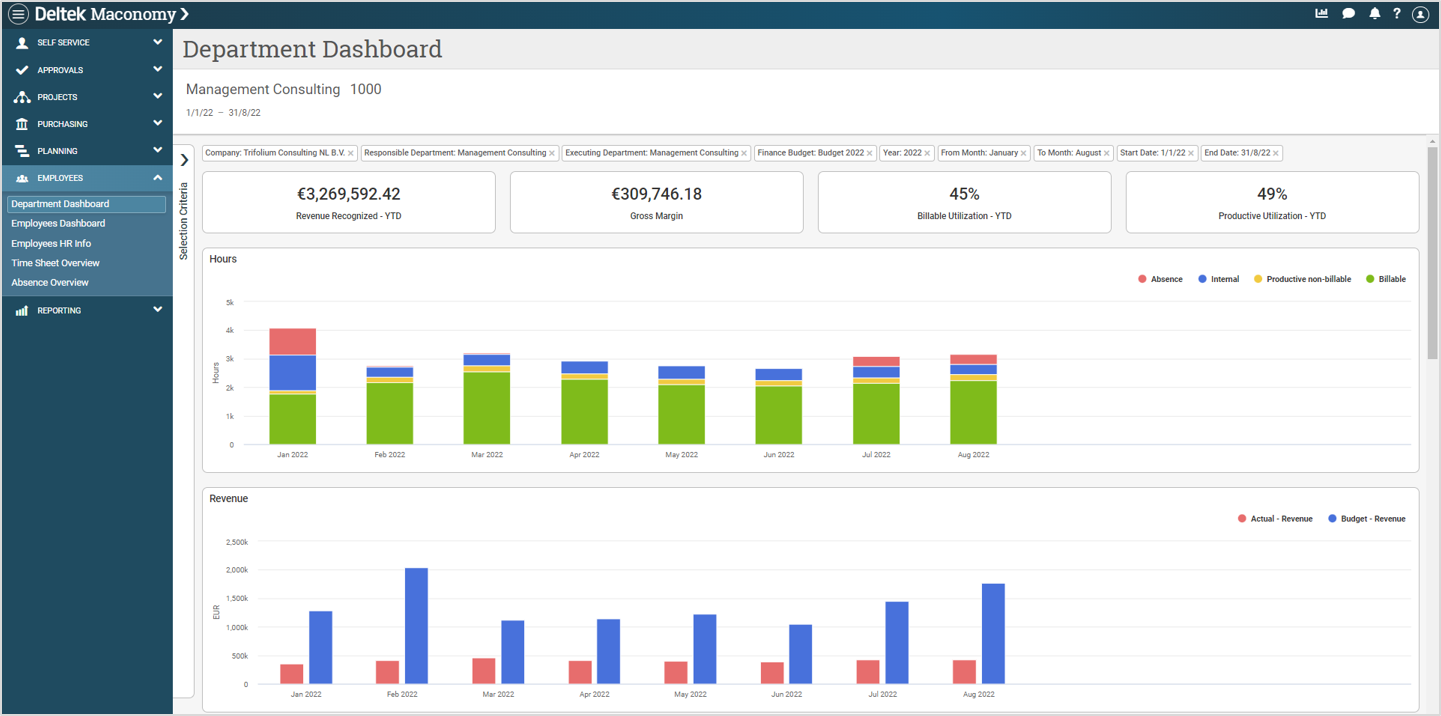
The department dashboard provides team leads and managers full insight into hours and revenue generated and scrolling down you will get the detailed numbers behind the performance.
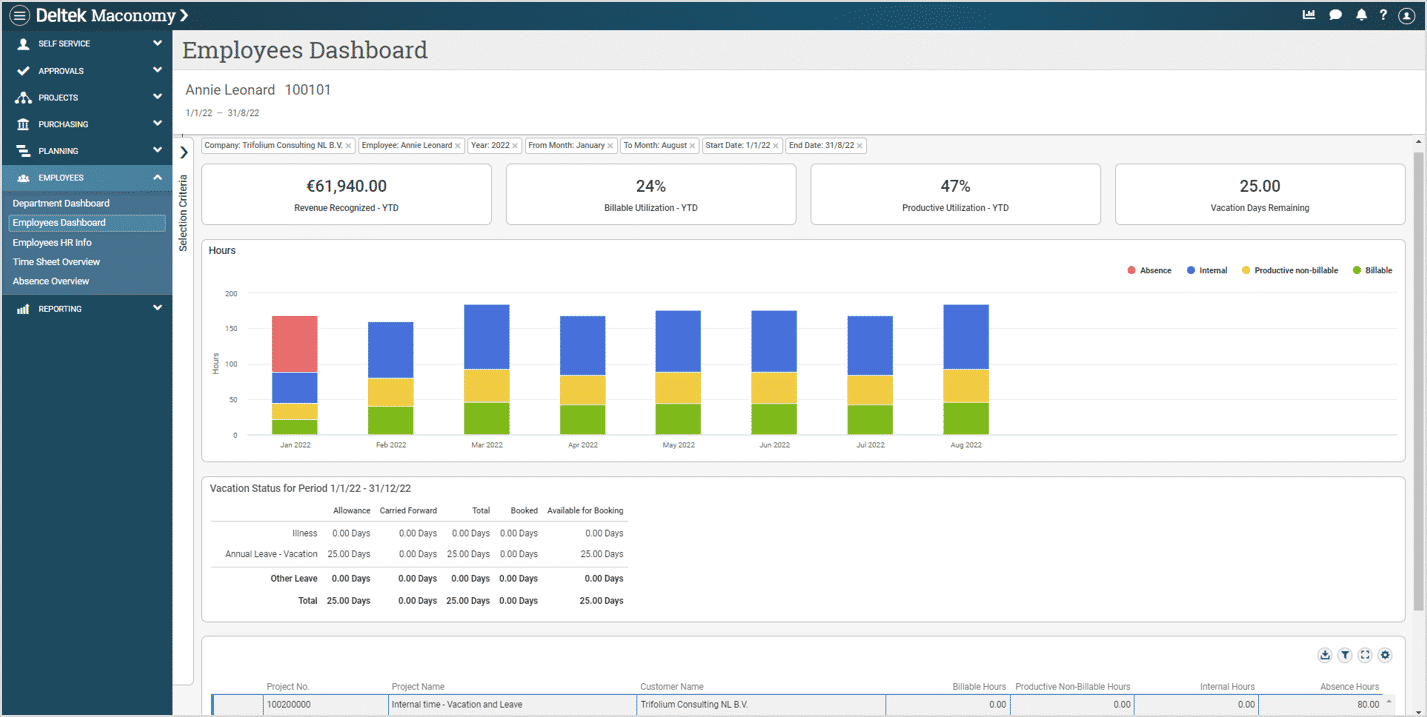
The manager can drill into the individuals performance in the employee dashboard and see there number of hours generated, revenue, vacation etc.

In the time sheet overview the department manager can see the employees in the team and whether they have submitted the time sheets as well as how the hours are split on billable / internal hours for the given week.

In the employee absence overview the manager can easily see when people have planned vacation and whether it’s approved or not.

In the Utilization dashboard the department manager will get more specific information about the teams’ utilization – also compared to the utilization of other teams
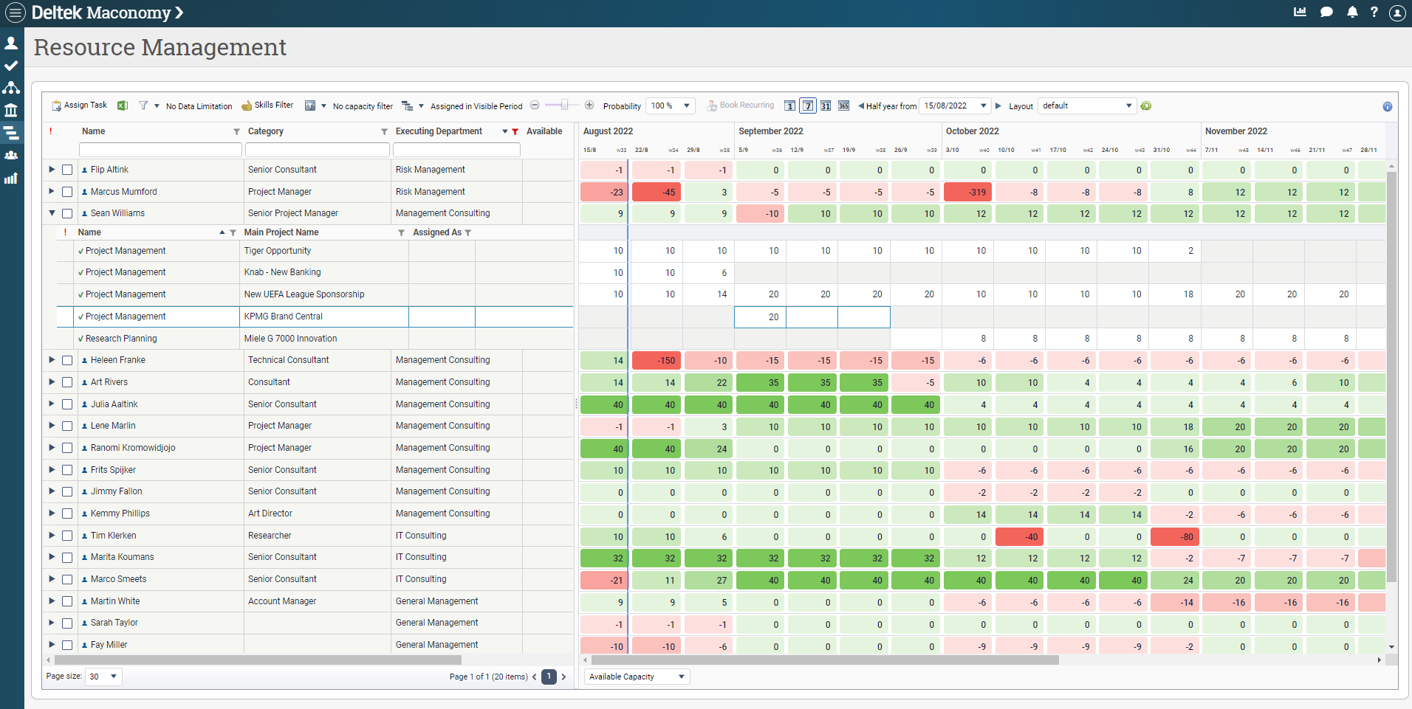
In the resource overview you can expand for a given resource and see what the assignments– and directly from here change the bookings.
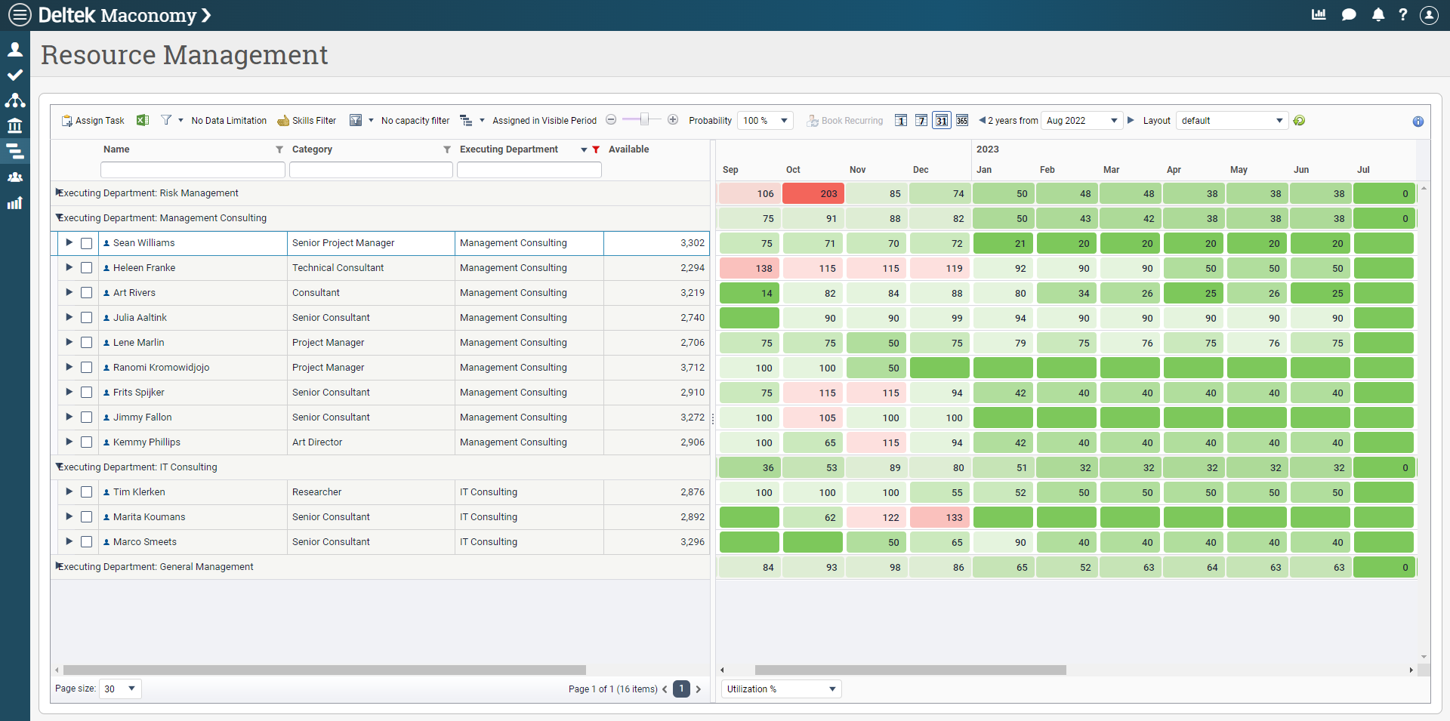
The resource overview is very dynamic – so you can show information grouped – in this case by department and the data then summarised. In the color view to the right we have to chosen from the drop down at the bottom to switch to show utilization % and we have also decided to view by month. So suddenly you have a departmental forecast by month.
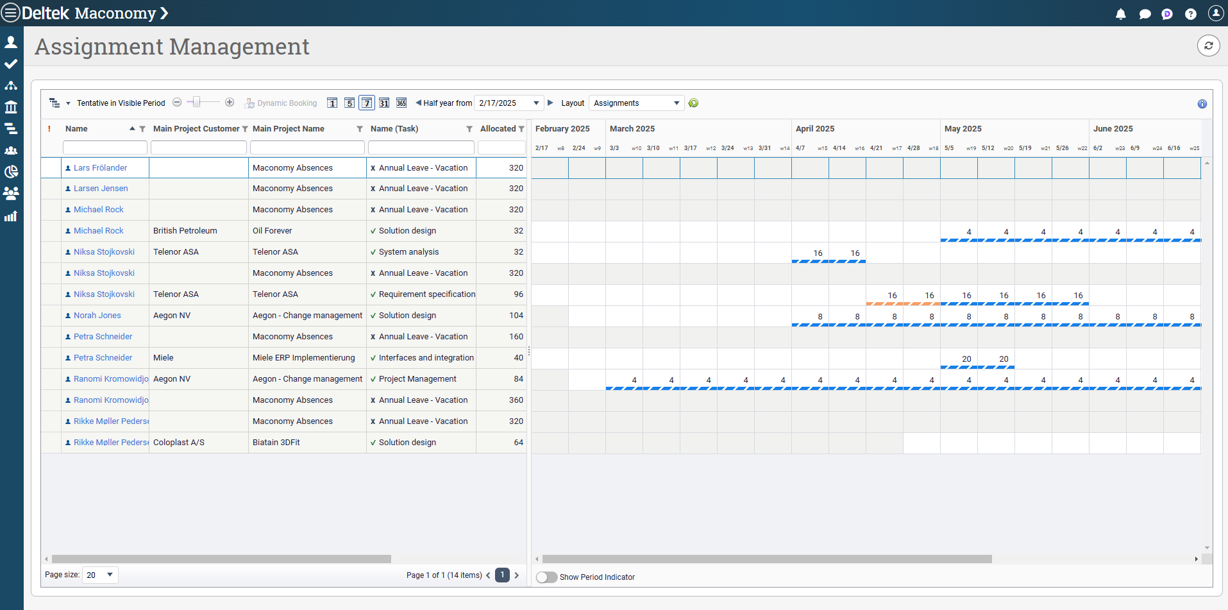
The assignment to a project can be requested, which appear as tentative booking. These can be approved by the resource manager.
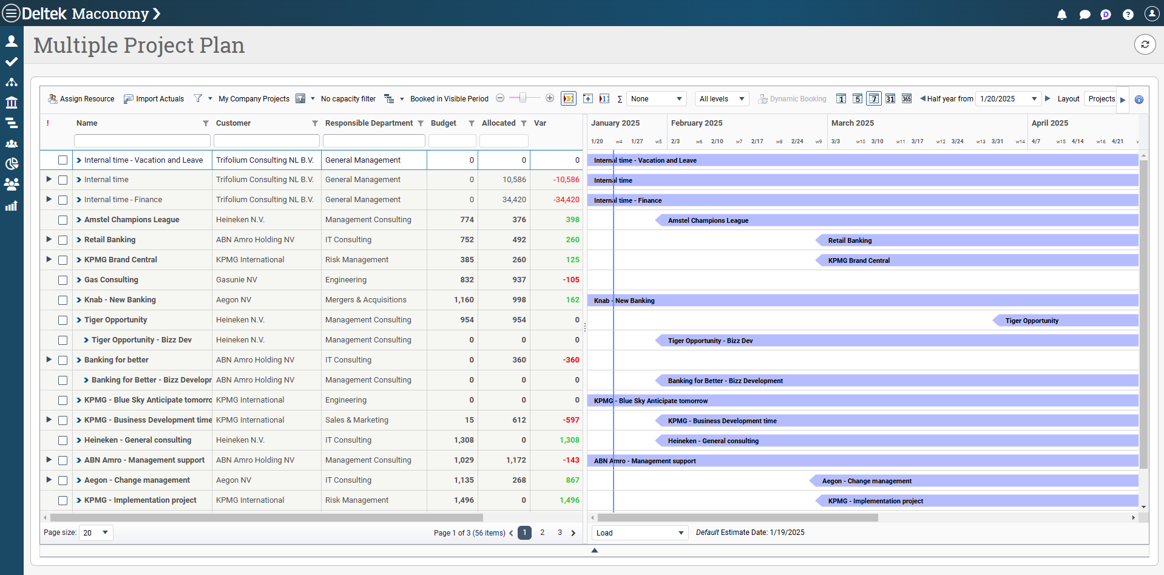
Multiple projects are shown in a single overview with options to drill down to the individual assignments.
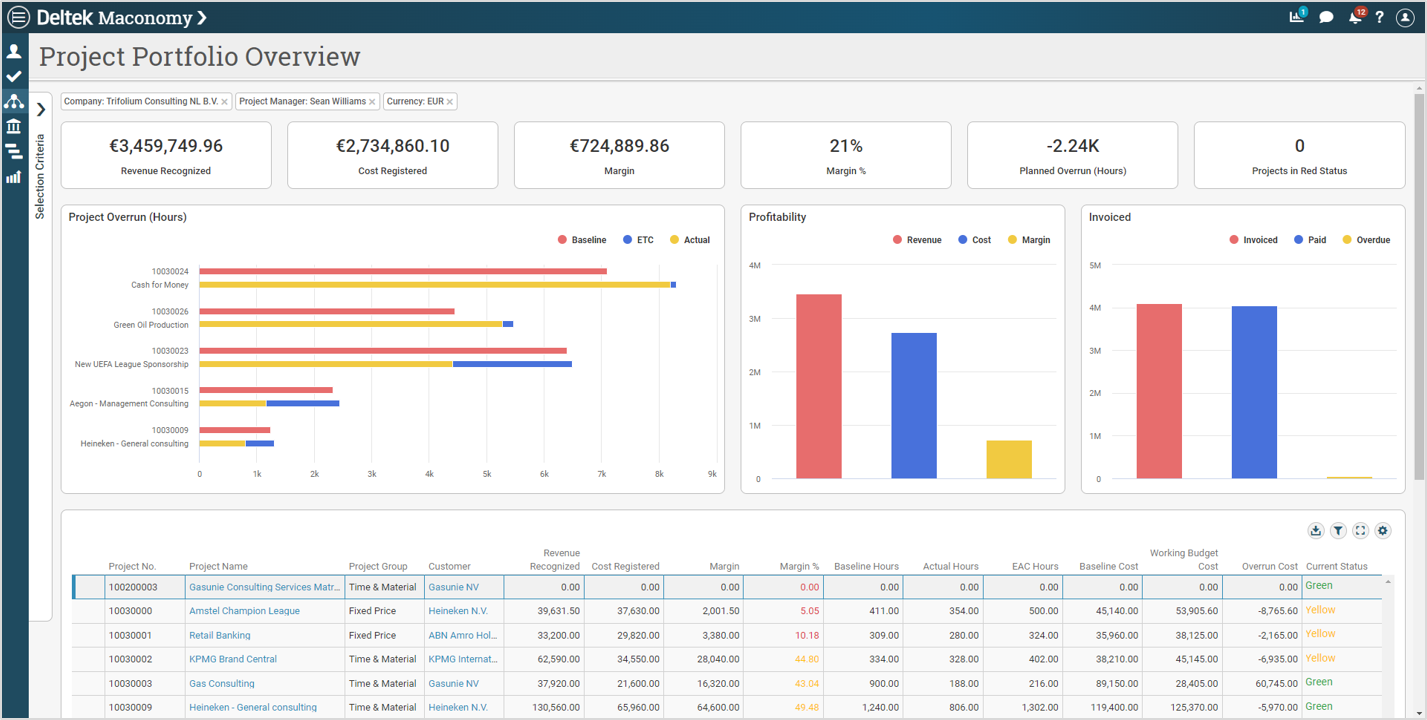
The project portfolio overview gives a full overview of the projects that e.g. the project manager is in charge of.
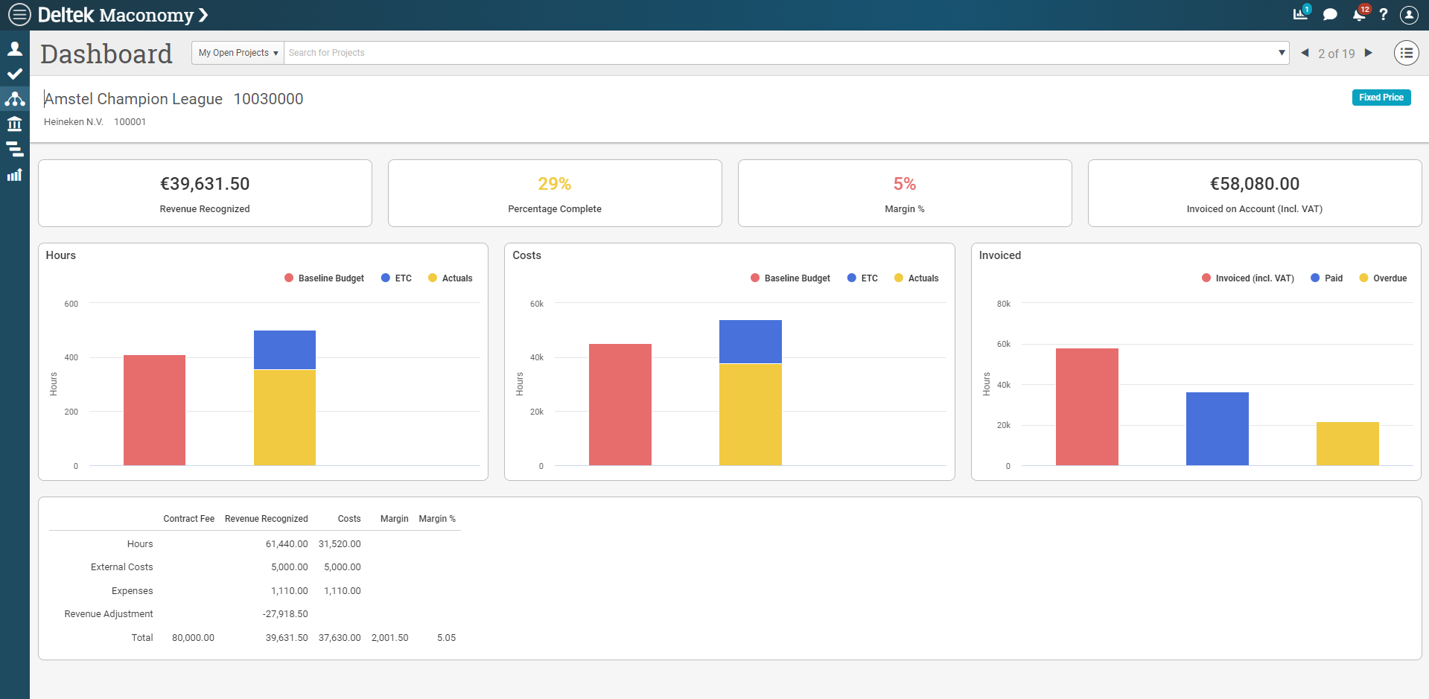
The project dashboard shows the performance of the individual project with comparison to baseline budget.
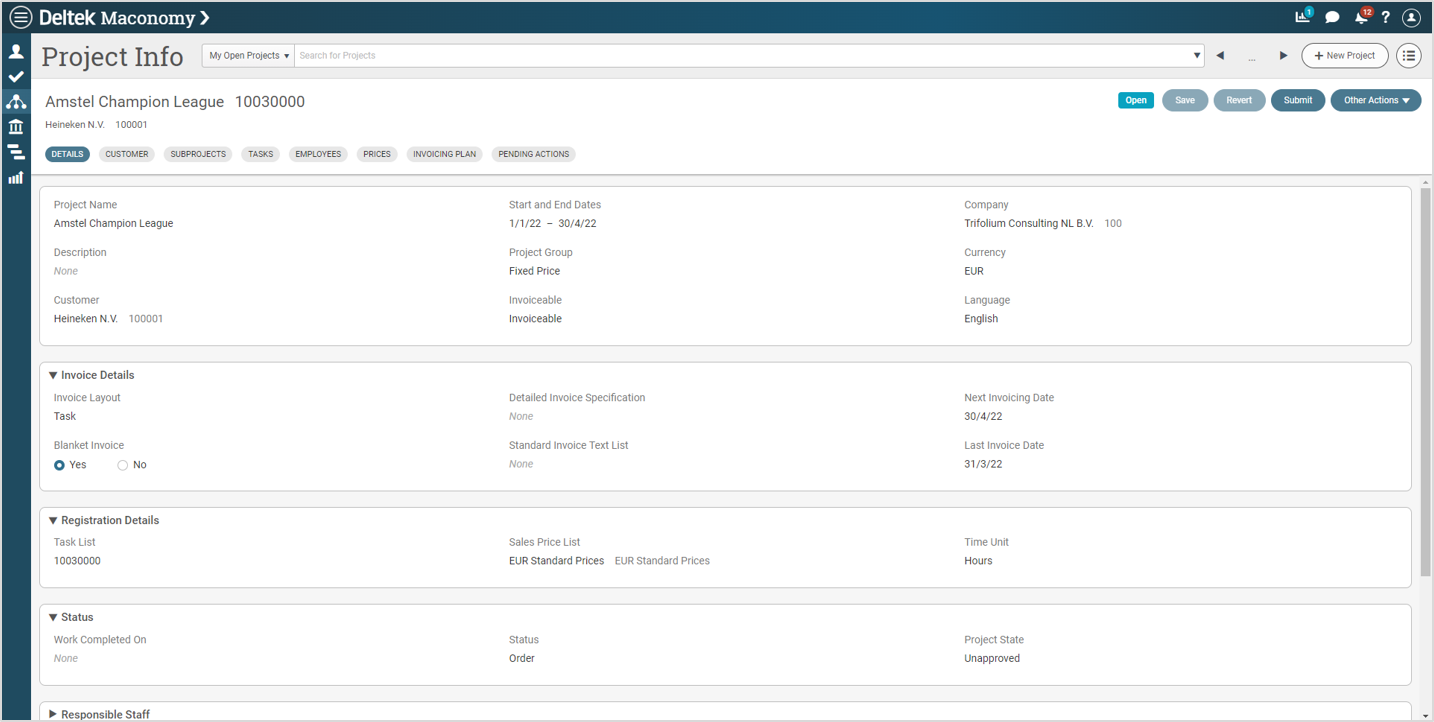
In the project workspace the project info hosts a number of tabs where you have the most important setup info about the project – such as shown here, but also, tasks, rate cards, invoicing plans etc.

It is possible to create new projects that will be based on template and thereby derive a lot of key information automatically.
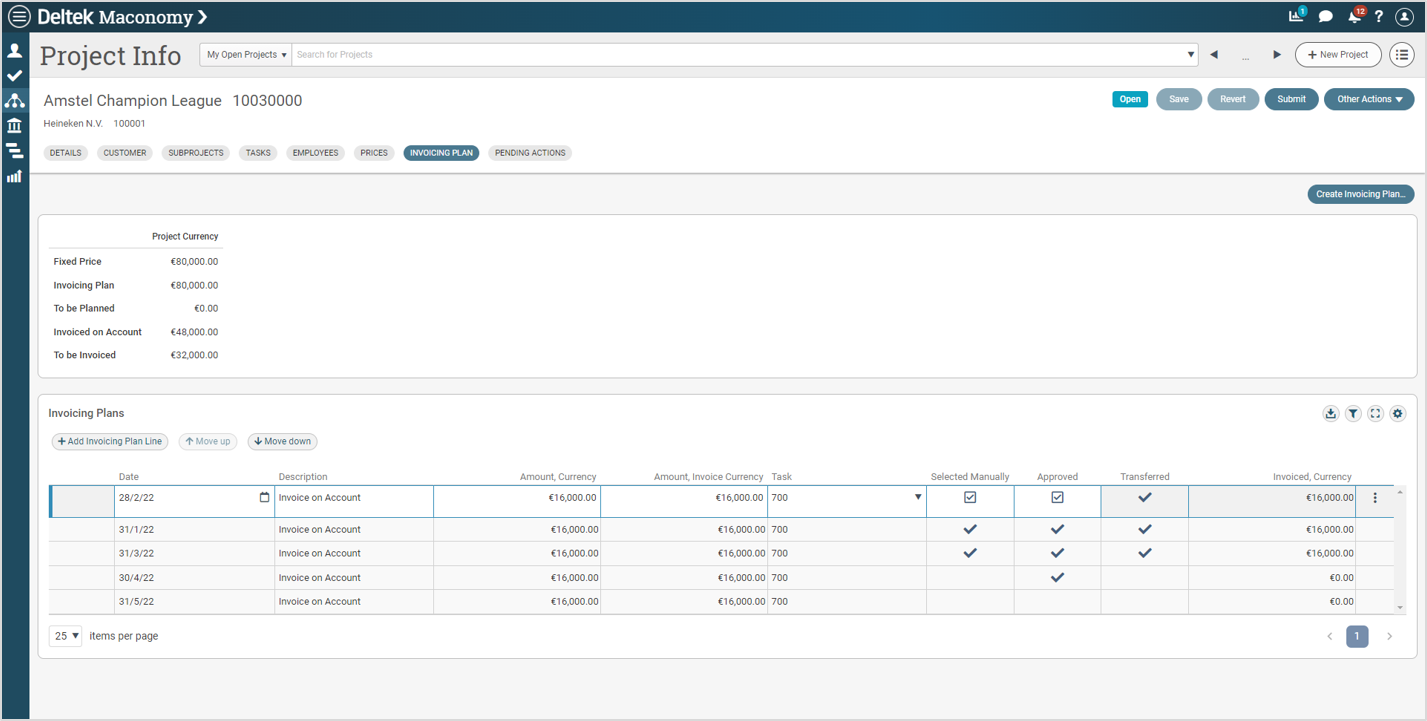
In the project workspace you can set up an invoicing plan – and the solution will then inform you when a planned invoicing date has been reached.
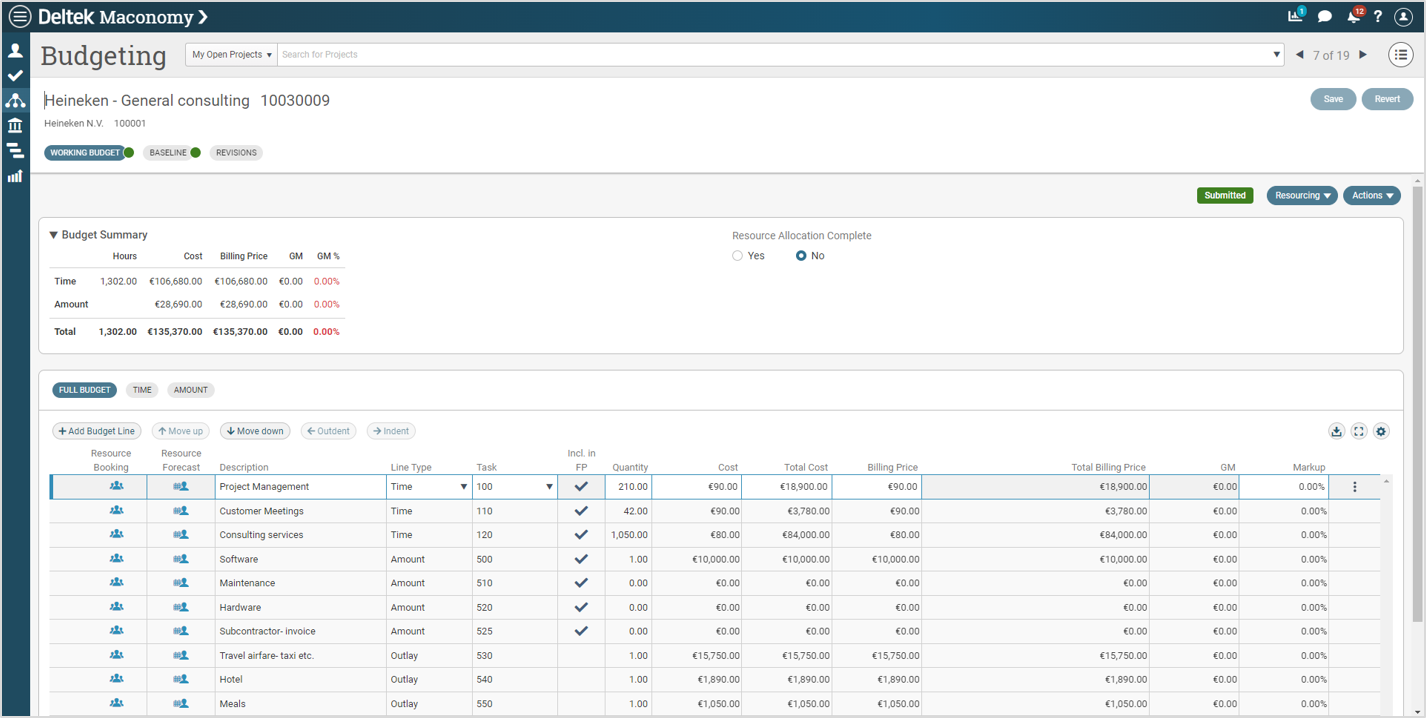
The project budget allows you to break down the project with full WBS structure and budget by task as shown here, or a budget matrix can be set up as well. Rate cards can come from the client or with project specific rates. There is full audit history as well as multiple versions, such as baseline and working budget.
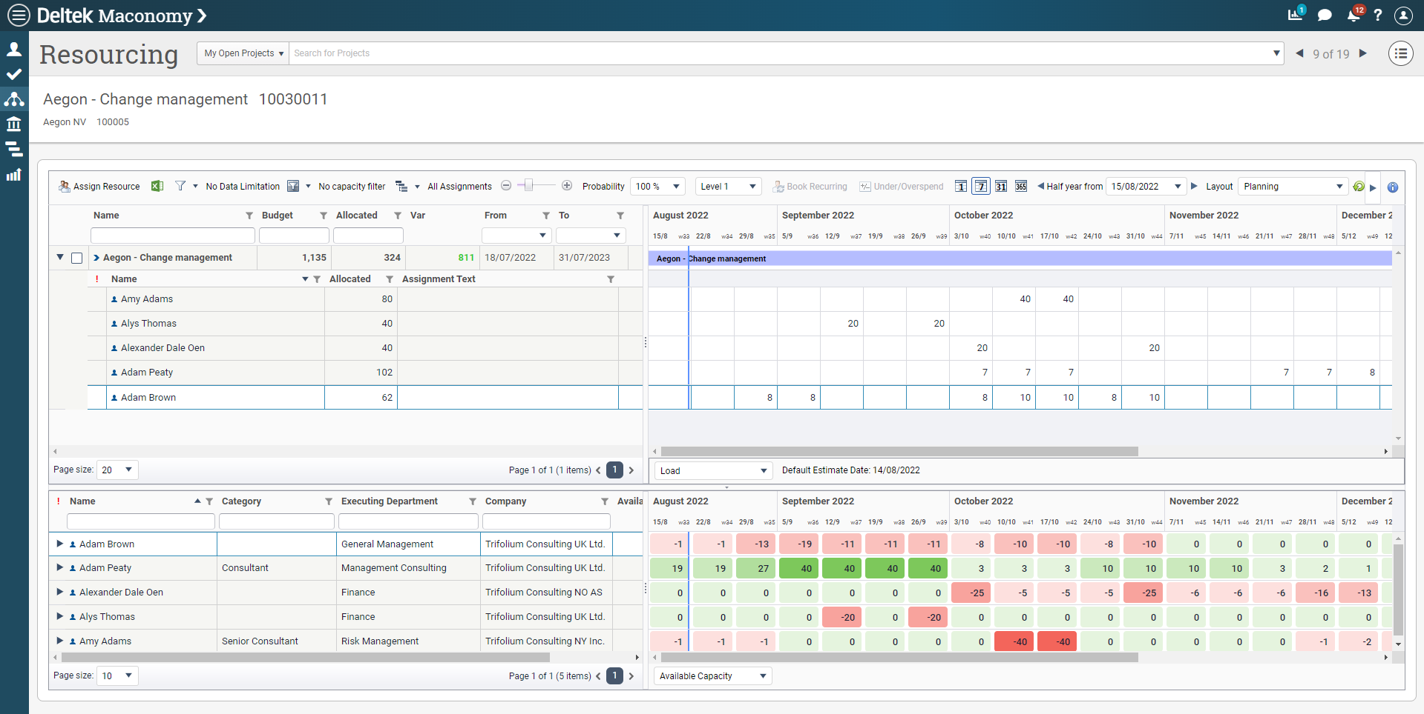
In the project staffing screen you can allocate people to the project – i.e. On project level as shown here at the top, and then you can view peoples availability at the same time at the bottom.
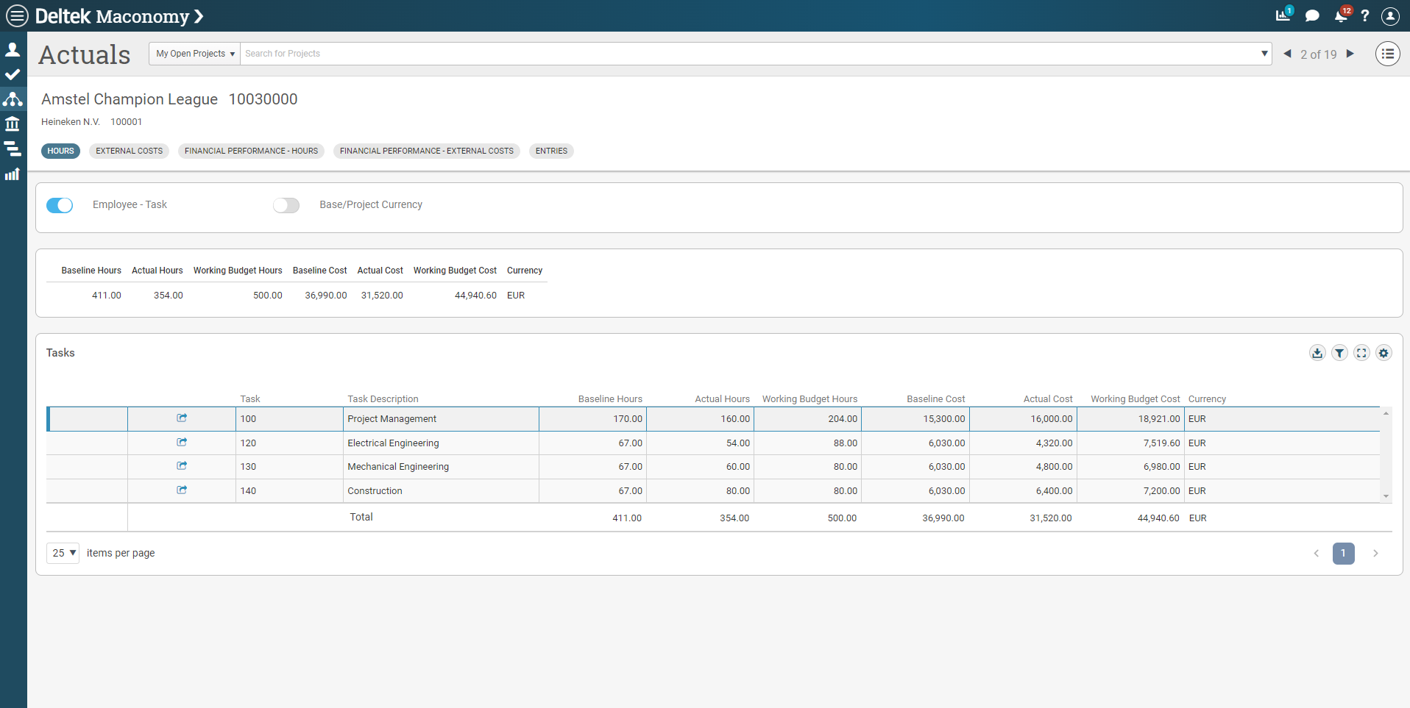
In the actuals menu you will get full insight into hours, costs, financial performance – with details by task or employee and with drill to further details.
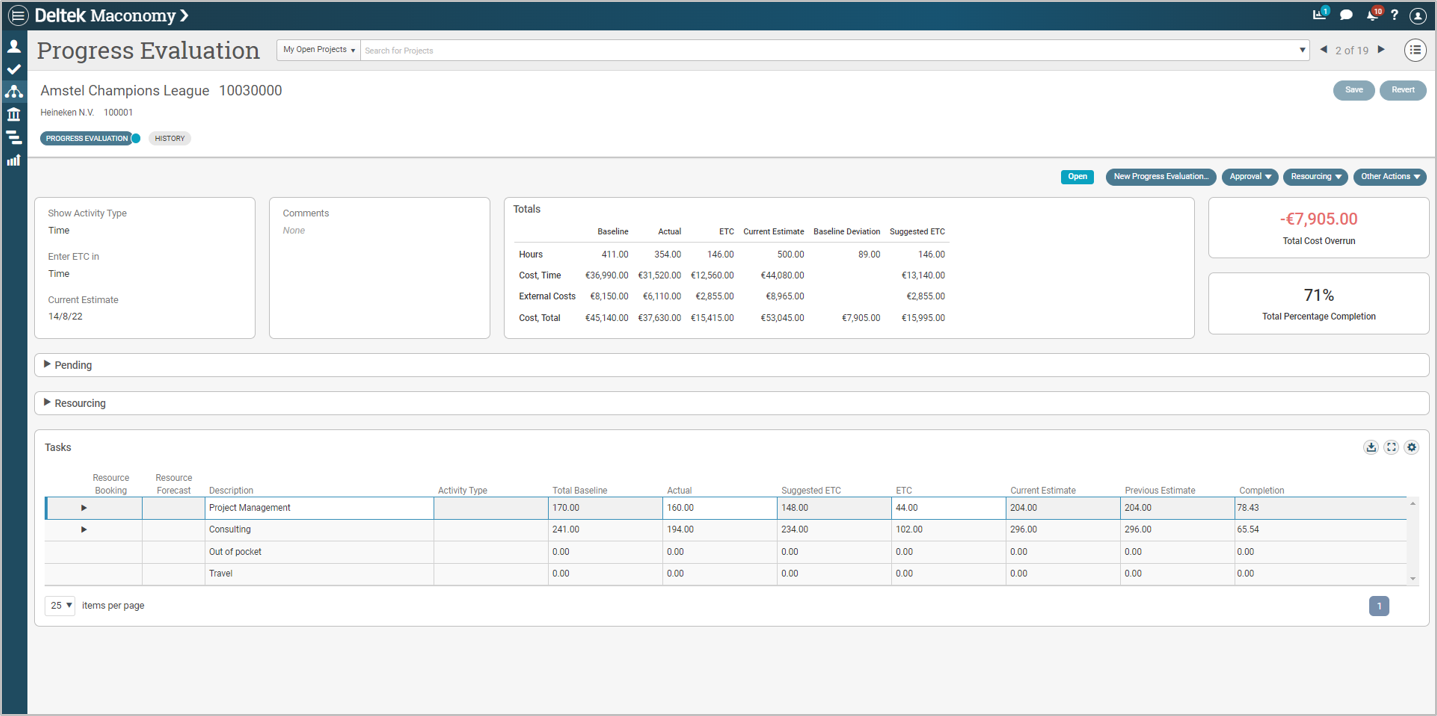
The project manager can evaluate progress on projects and using Estimate to Complete – the solution will automatically calculate the EAC and thereby also the % complete. This is directly tied to revenue recognition and adjust the revenue once finance approves.
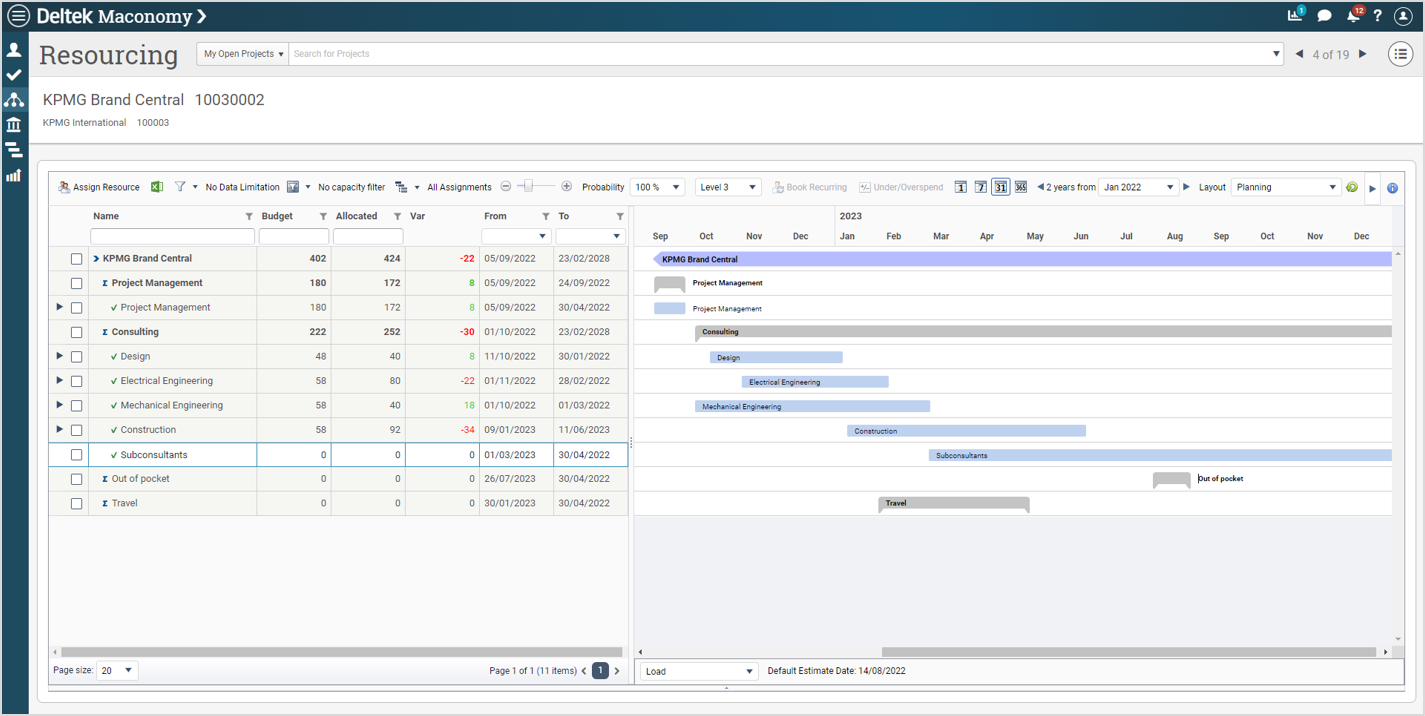
You can also break down the project with full WBS.
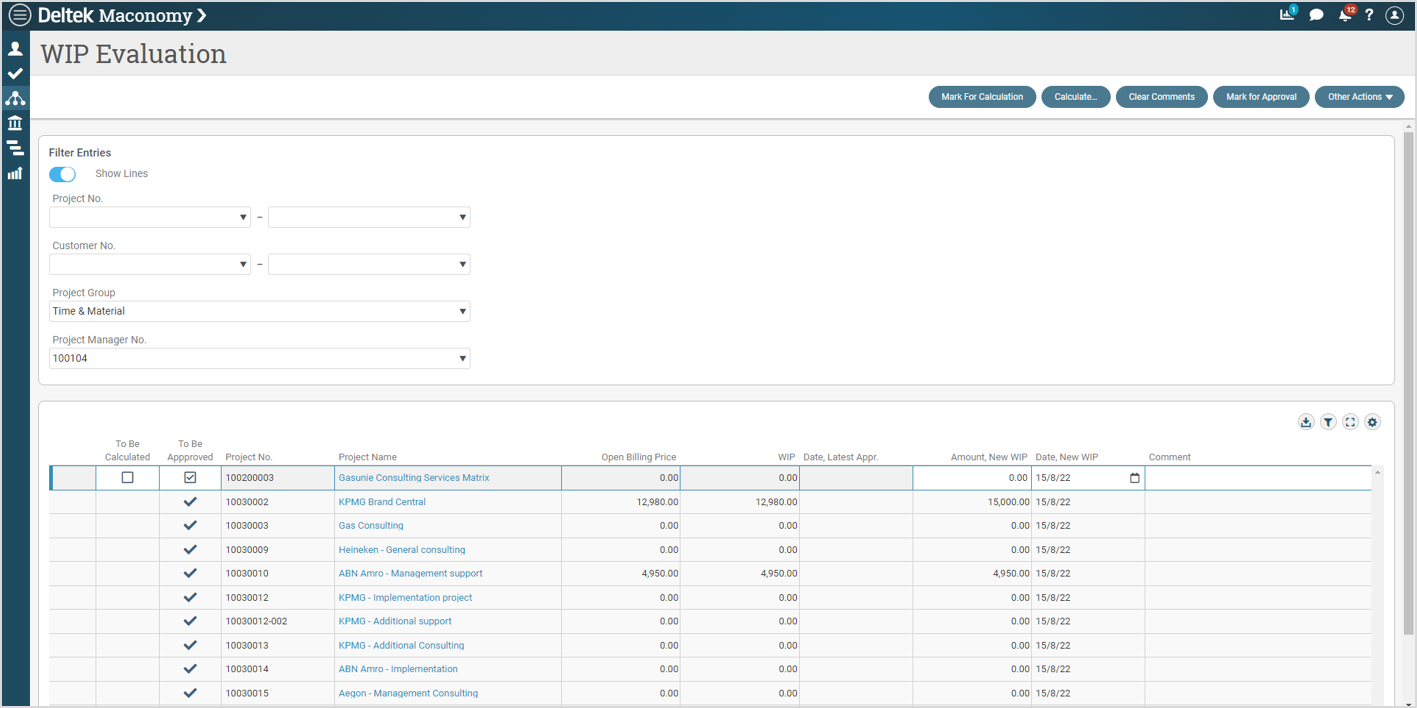
For time & material projects the project manager can as part of month end evaluate the value of the WIP on his / her time & material projects – and finance can approve to ensure accurate month end numbers.
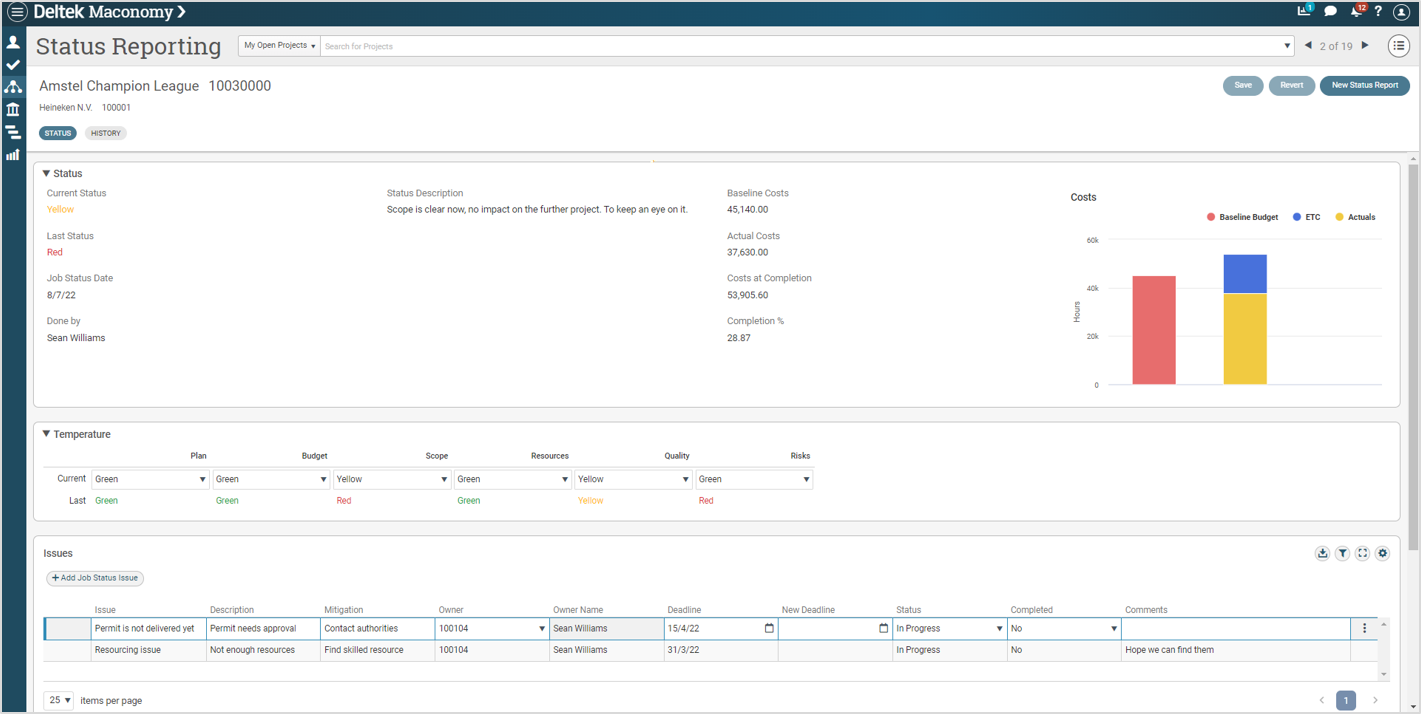
As part of following up on projects a status report can be created tracking the temperature of the project and compare to previous status – as well as tracking issues and milestones.
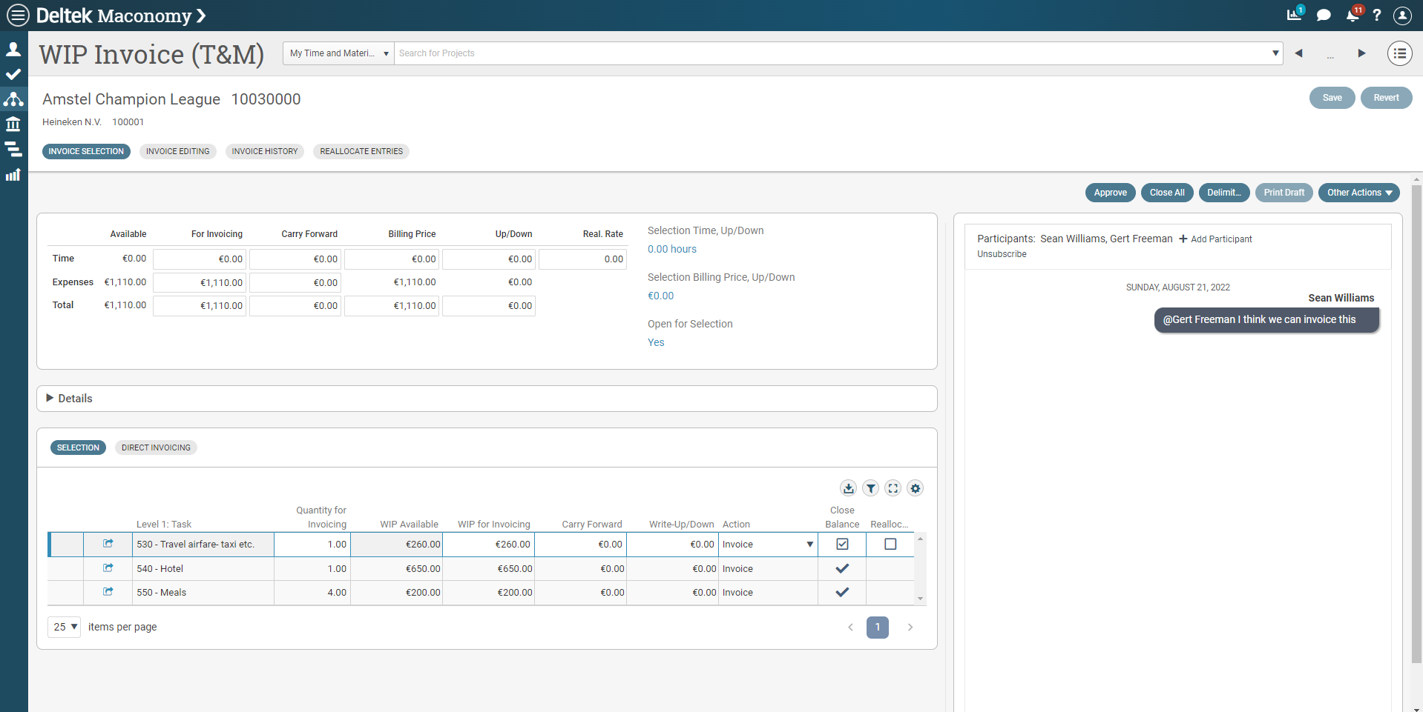
Project Managers can invoice the projects themselves for their selected time & material jobs the can see open WIP entries and select how much should be invoiced and also use the chat functionality to communicate with finance around the invoicing process.

The customer workspace summarises everything around a selected customer and starts out with the above dashboard, which gives insight into key KPI’s and graphs and tables showing customer performance.
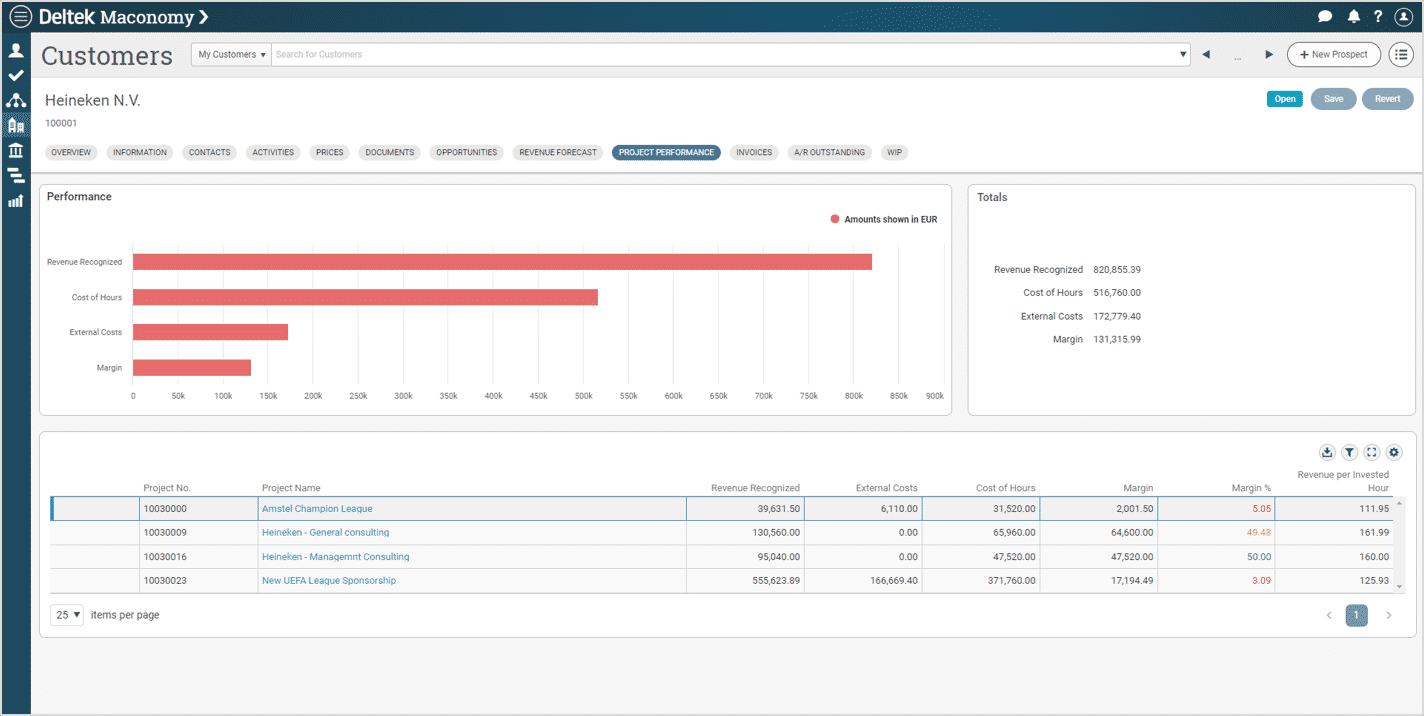
In the customer workspace there is a tab for project performance showing how the individual customer projects are performing.
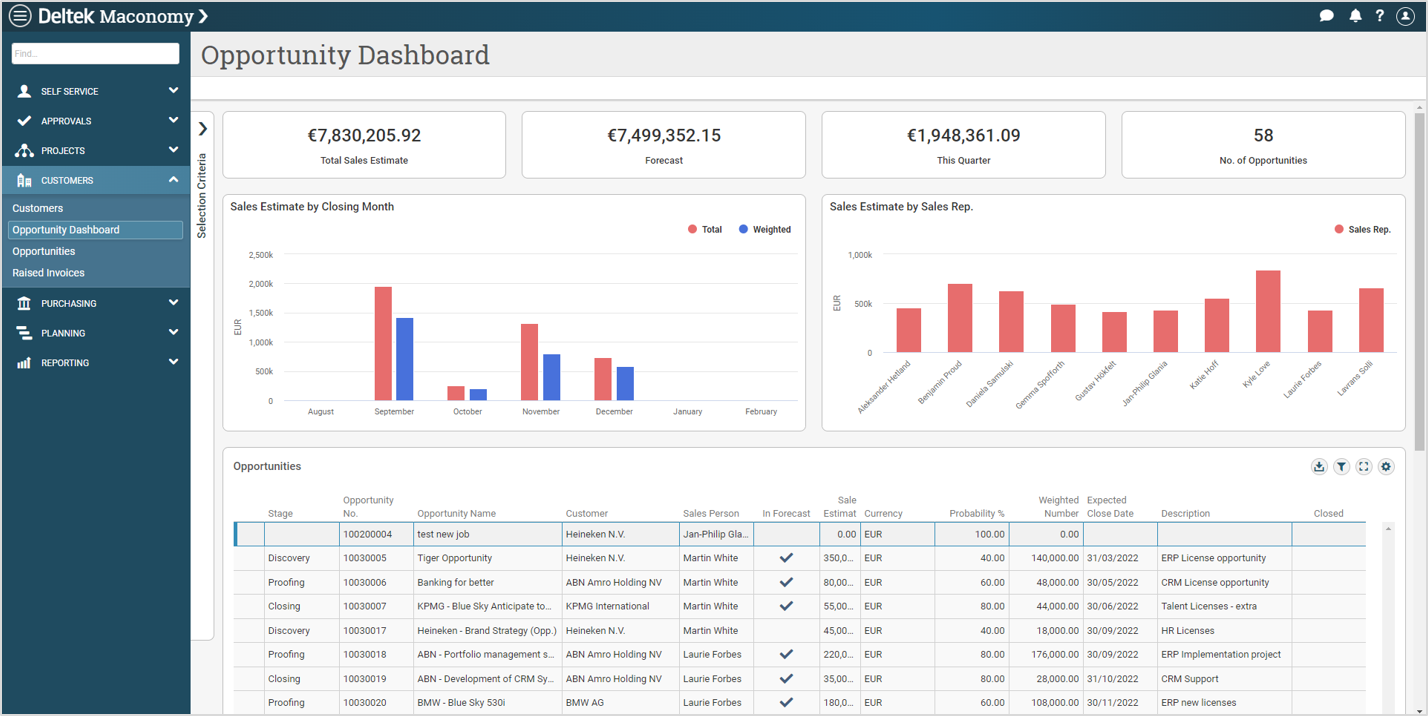
The opportunity dashboard provides full insight into incoming client work - and the dashboard can be sliced and diced using the selection criteria.

In the opportunity workspace you have full insight into the details of the individual opportunity. With detailed tabs, on activities, pricing, estimates and even actual hours and cost spent on the opportunity.
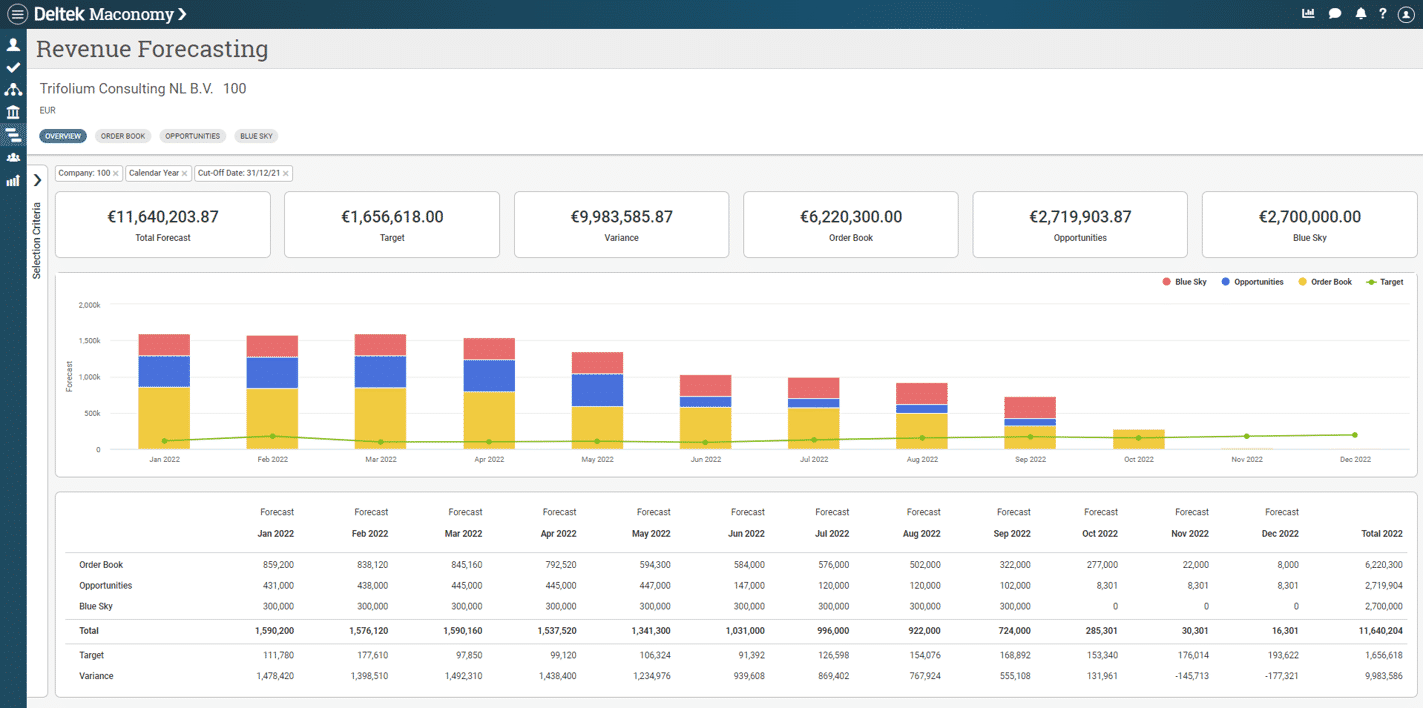
The revenue forecast provides a full forecast for the coming months or year and takes into account all the signed jobs as well as opportunities with comparison to your target. Revenue forecasts can be updated on resource bookings, start and end dates of projects or manually updated.
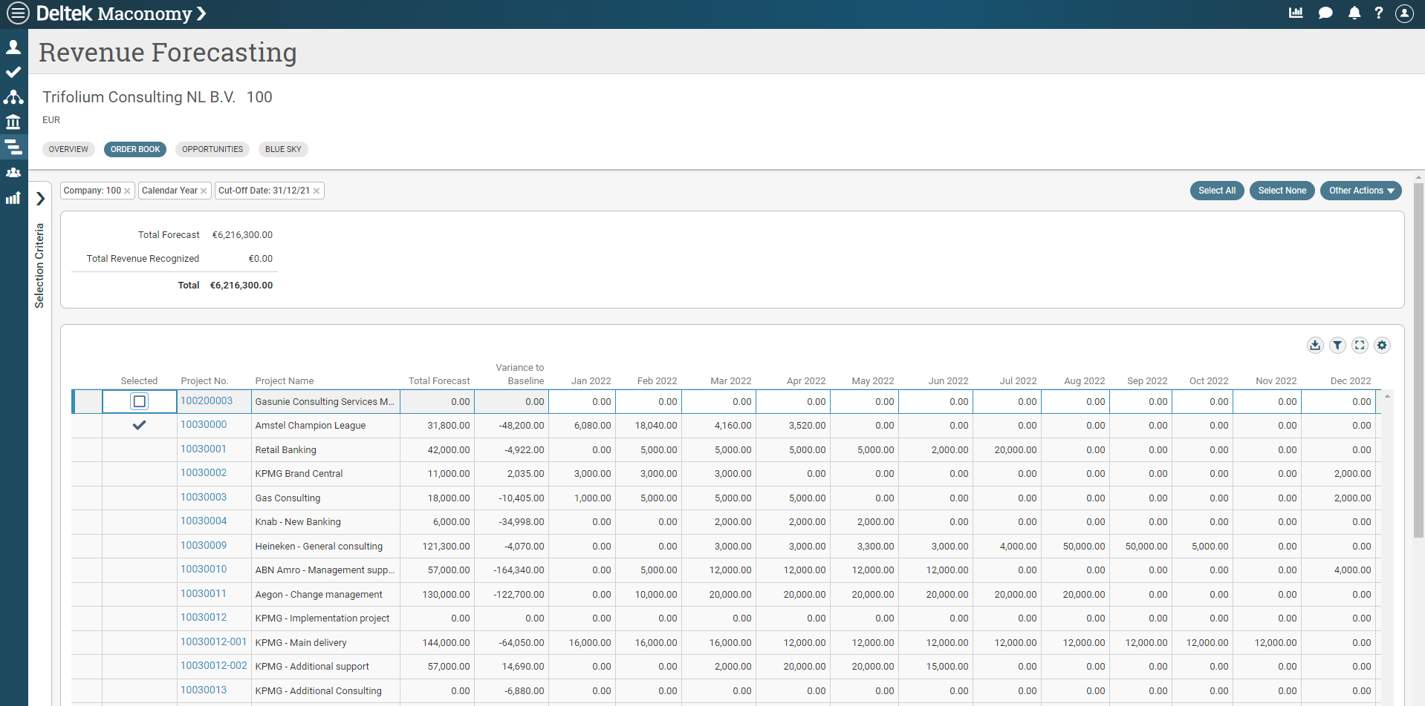
In the revenue forecast you have the ability to update the forecast for the individual projects – you can e.g. select all your projects and say you want to update from your resource plans – and then with a few clicks you have a full updated forecast.
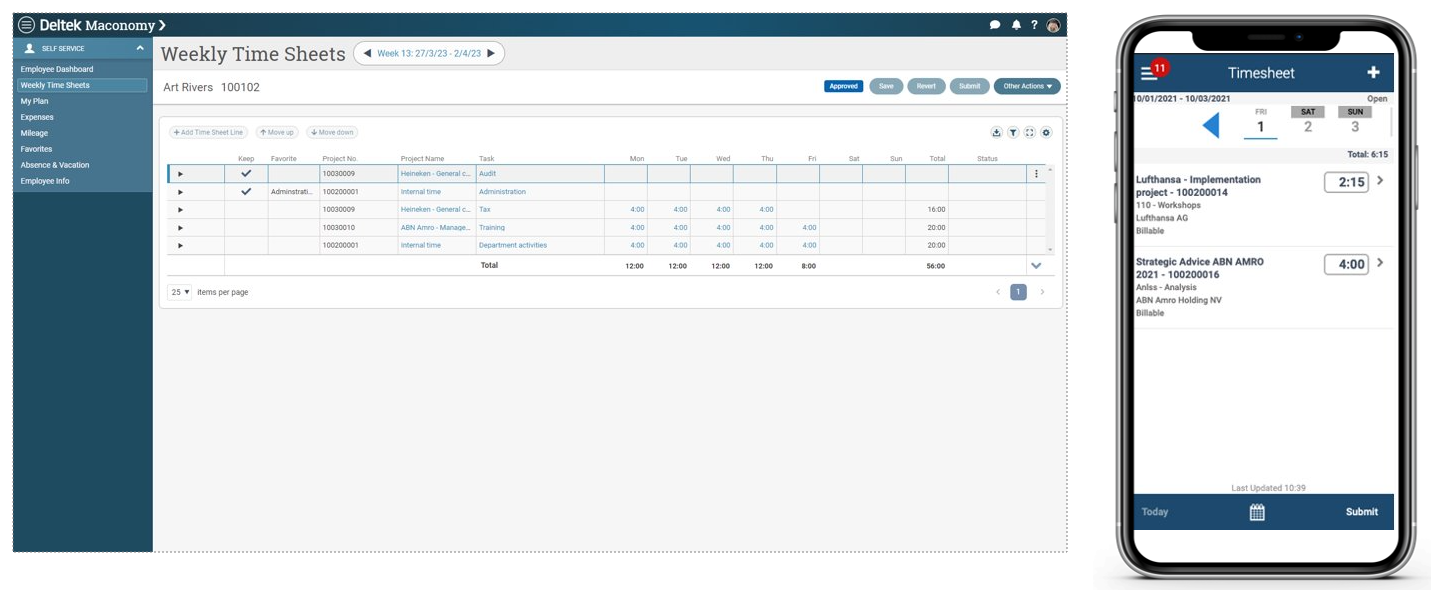
Easy timesheets: The employee can register time via the web-based UI or the mobile application. You can use keep and favorites to make it easier to record time to the correct projects.
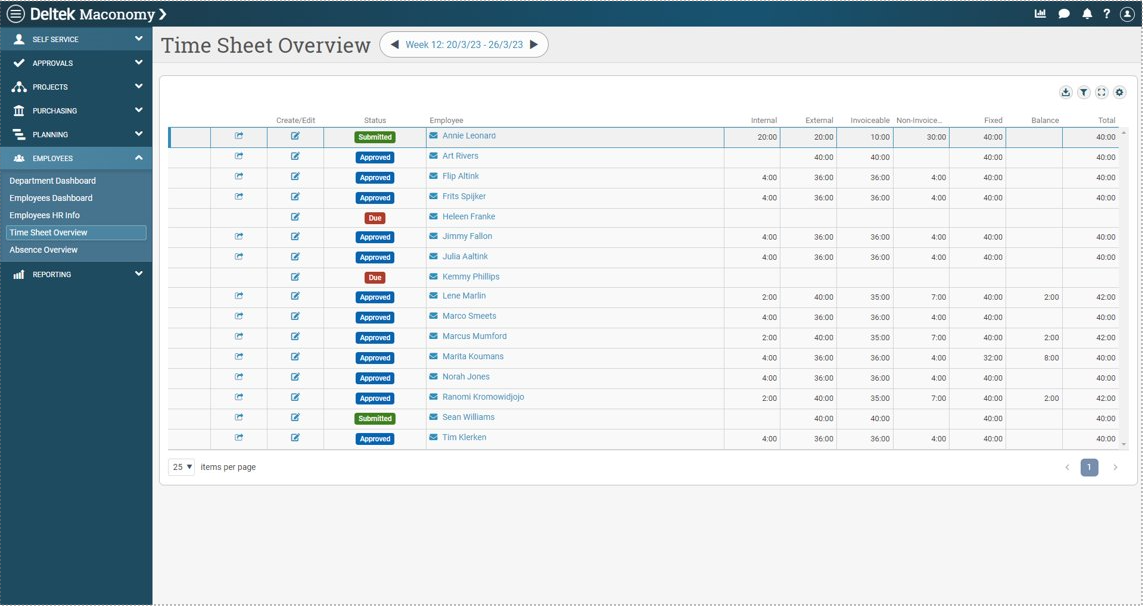
Full transparency of who's missing timesheets.
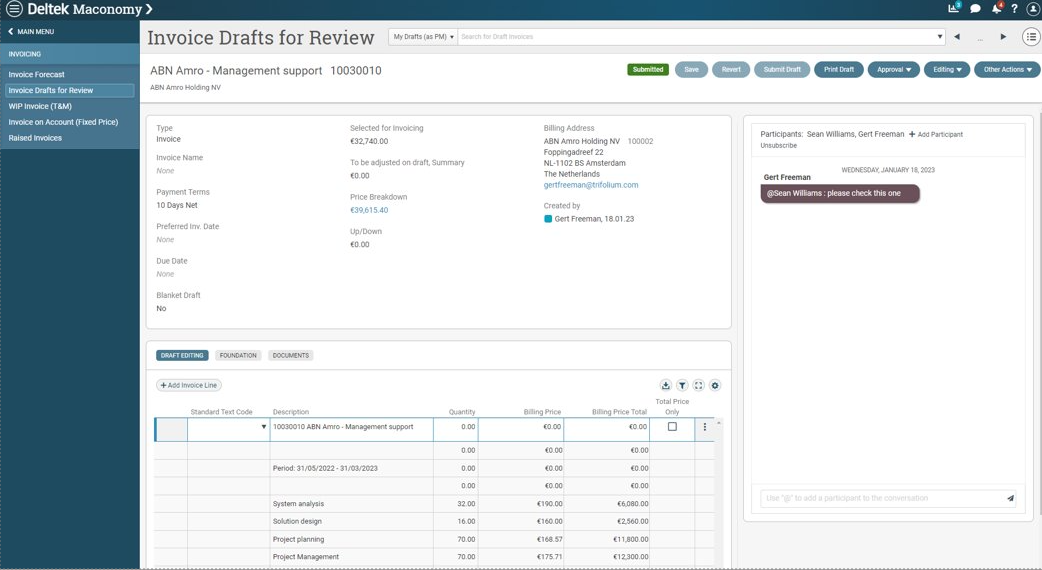
You can set up an invoicing plan, the solution will inform you when a planned invoicing date has been reached.
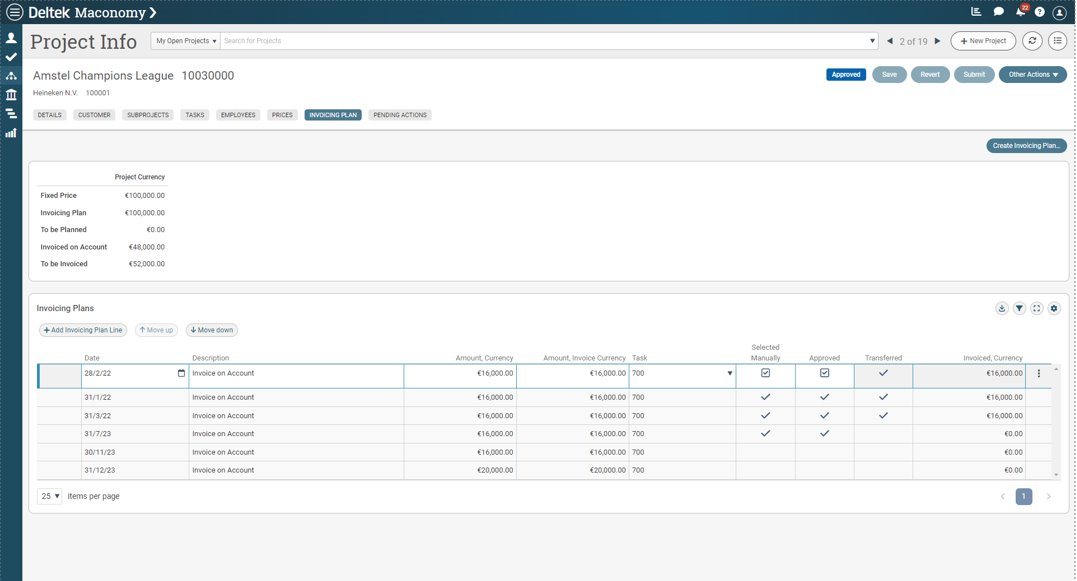
Project Managers can intitate invoicing themselves. For their selected time & material projects they can see open WIP entries and select how much should be invoiced. They can also use chat functionality with Finance around the invoicing process.
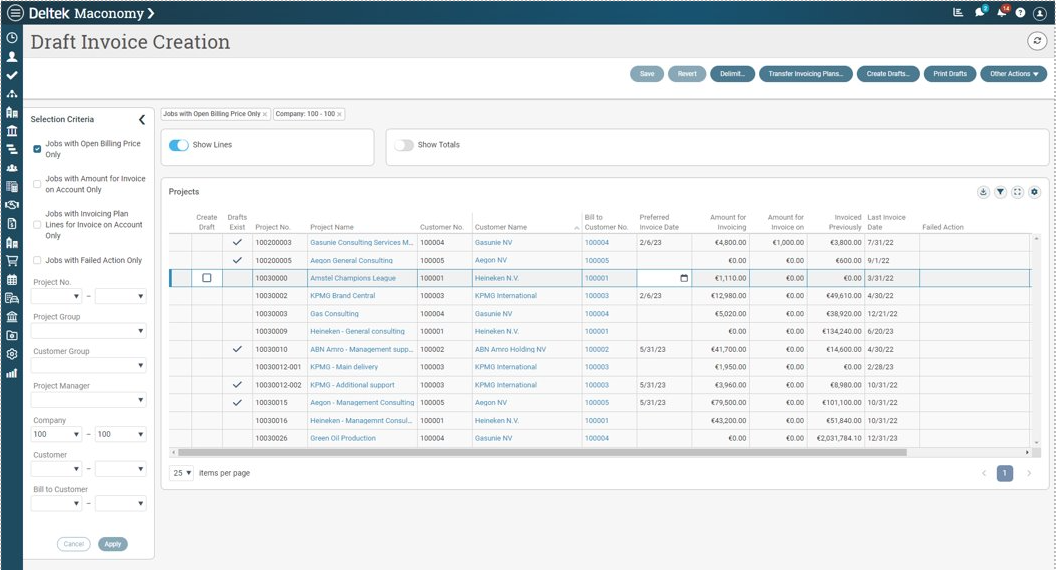
Finance can approve or initate the invoicing process in batch – letting you choose whether you want a centralized or a de-centralized approach.
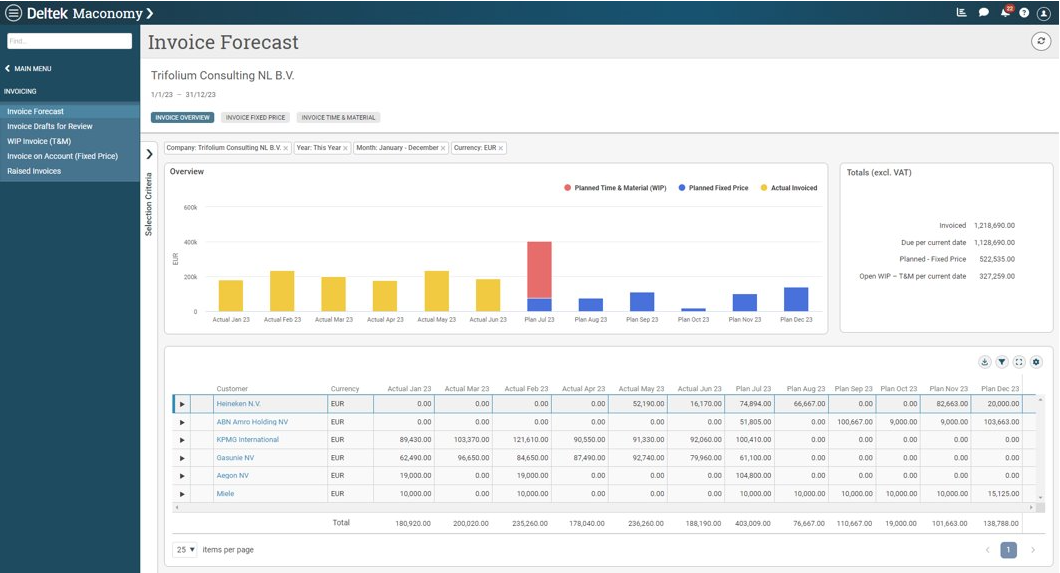
The project managers receives the centrally created drafts for review and approval, which includes a chat function for collaboration within the team.
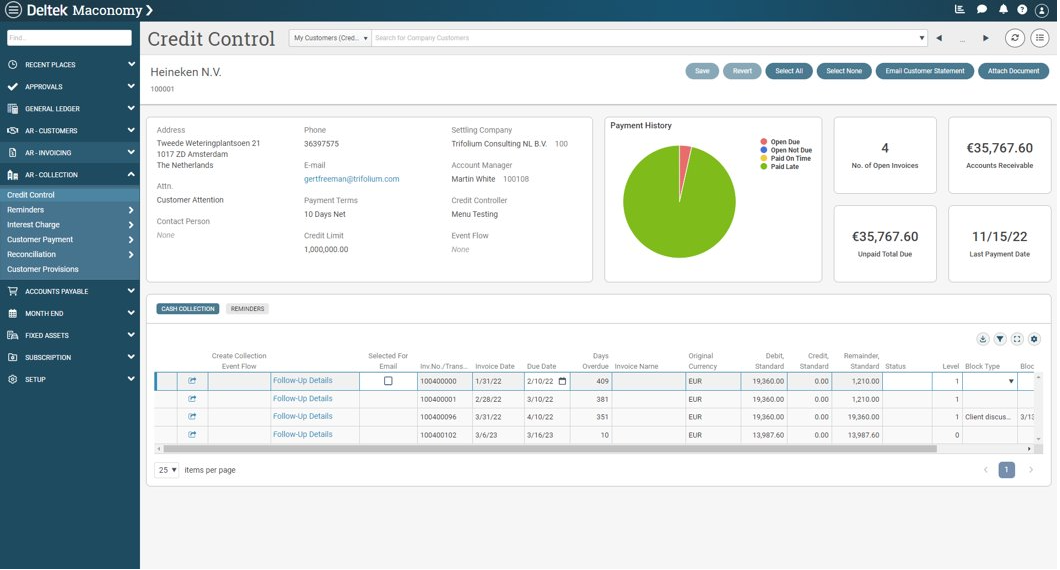
An Invoice Forecast dashboard is readily available to review what has been, and what is planning to be invoiced.
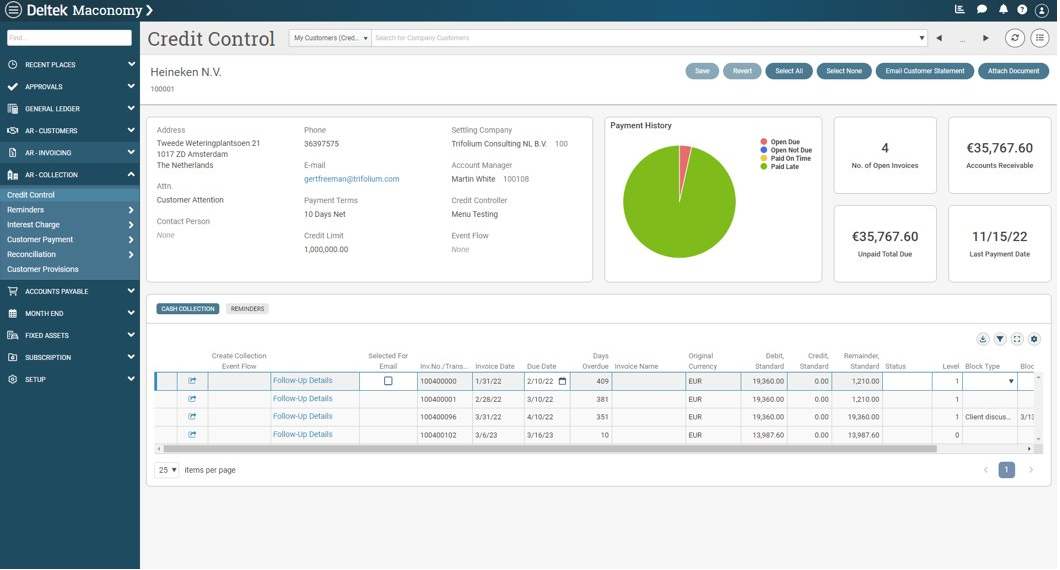
The Credit Control space gives a full overview of outstanding invoices, reminder letters and interest charges, allowing for swift follow-up of customer payments.

The AR Aging dashboard provides insight in the aging of the invoices, with option to drill into the details by client and project and to reprint the invoice.
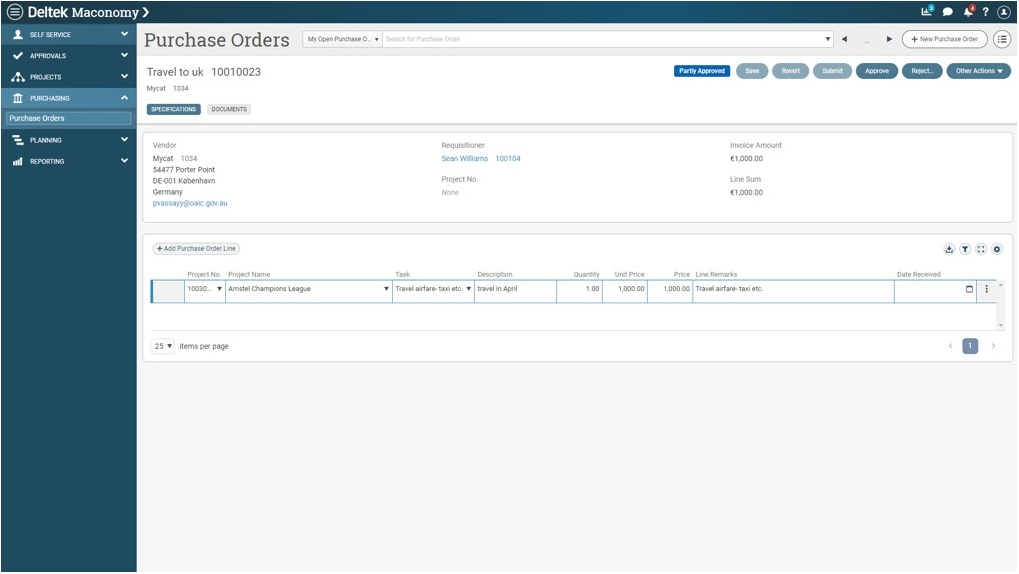
Purchase Orders may be created directly from project budgeting, or on an ad-hoc basis. Maconomy will automatically adjust requirements on PO line based on purchase line type.
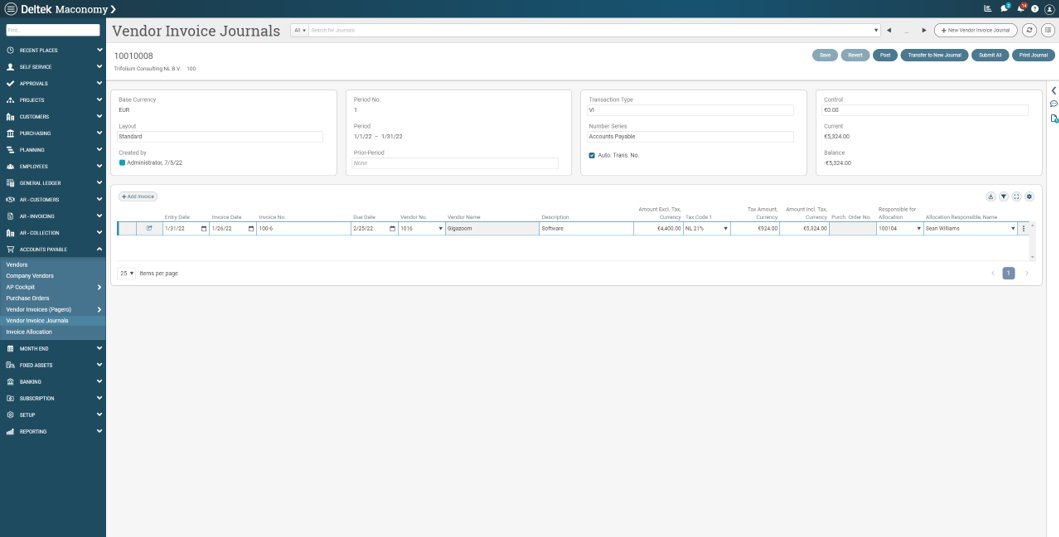
Vendor invoice management may be handled through automated, semi-automated or a manual process for registration and invoice line allocation, separating interally or externally related costs through different approval workflows. Attachments and chat functionality is integrated for ease of communication.
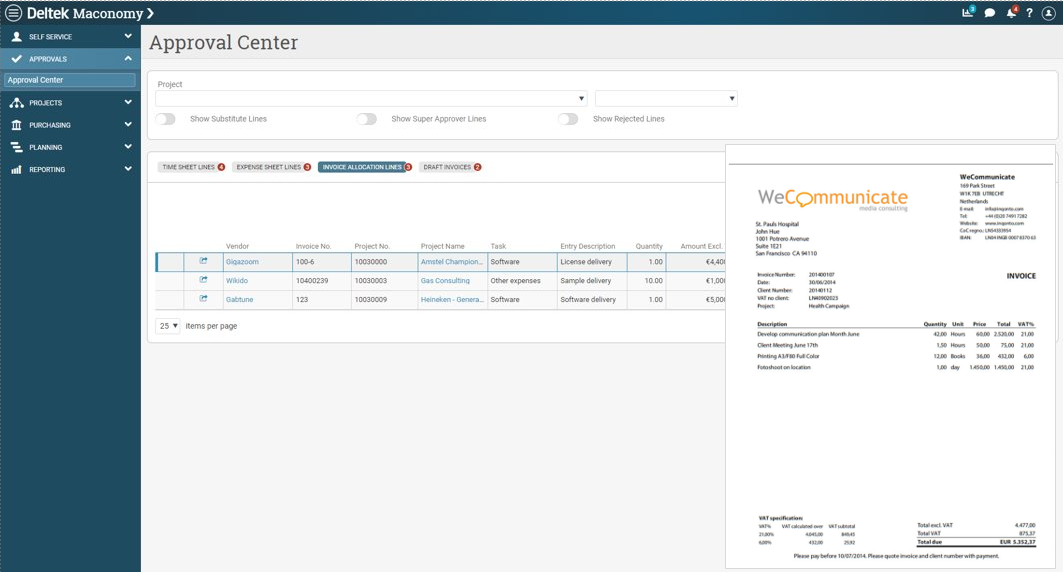
Multiple levels of approval can be setup to handle both Purchase Order and Vendor Invoice amount thresholds, ensuring data is correct.
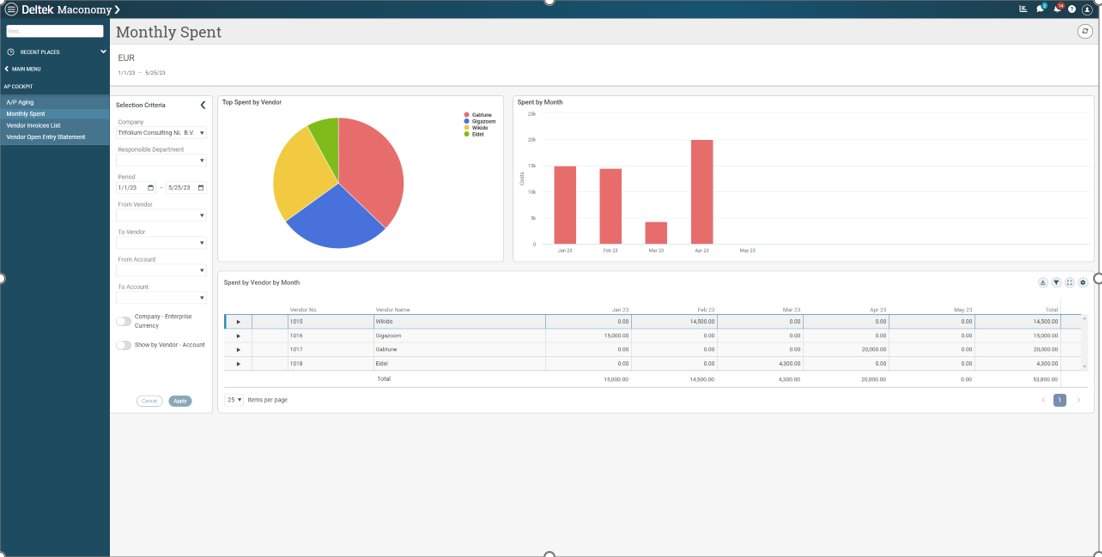
Monthly Spent and AP Aging dashboards are available for overview of expenditures.
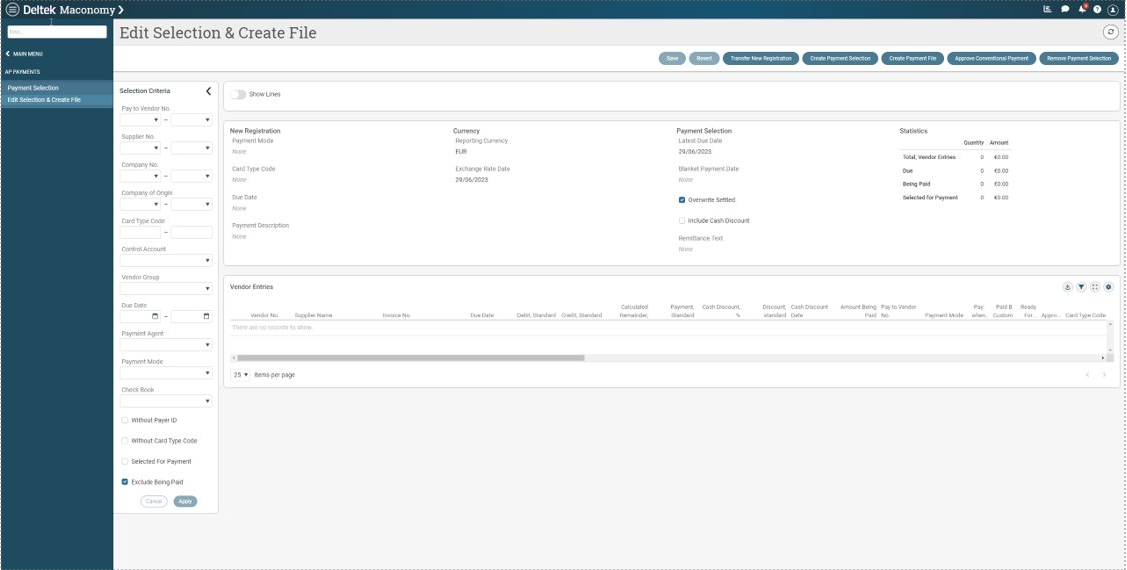
Payments can be handled manually or file based. Maconomy supports the latest ISO 20022 XML (SEPA) formats for easy handling of payments and bank reconciliation.
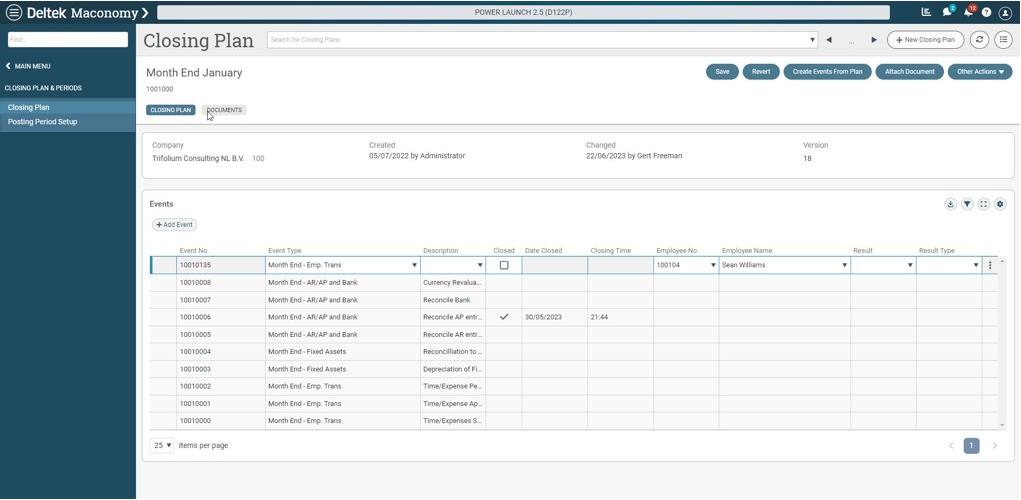
A Closing Plan will give an overview of month end activities allowing the finance team to work collaboratively.

The Posting Period Setup distinguishing between different transaction types let’s finance close certain areas of the system for untimely posting during month end.
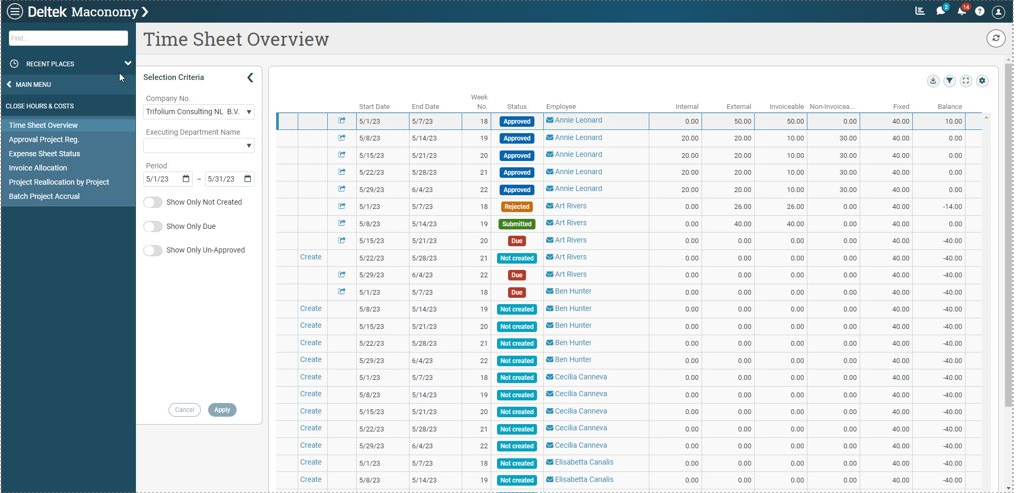
Overviews of timesheets, expense sheets, and other project related registrations helps the finance team in prompting or completing registrations on other’s behalf.
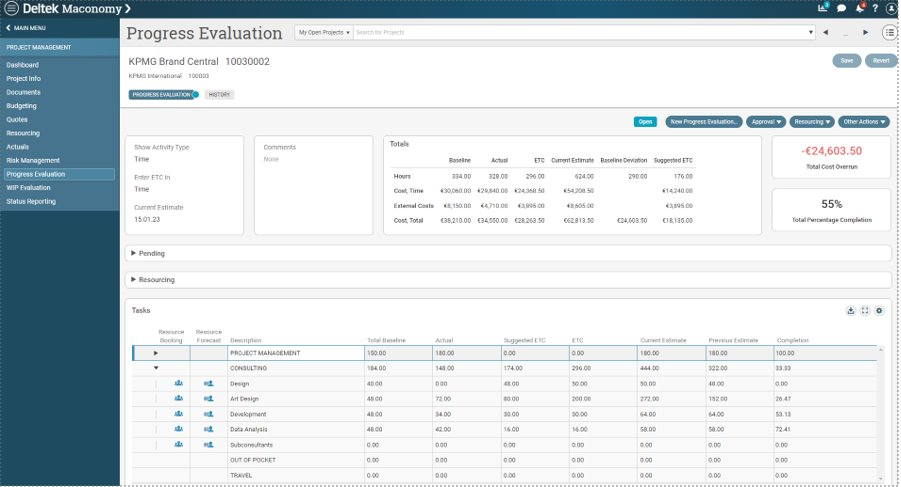
Finance can help complete and approve Progress Evaluations of ongoing projects to ensure the correct amount of revenue is recognized.
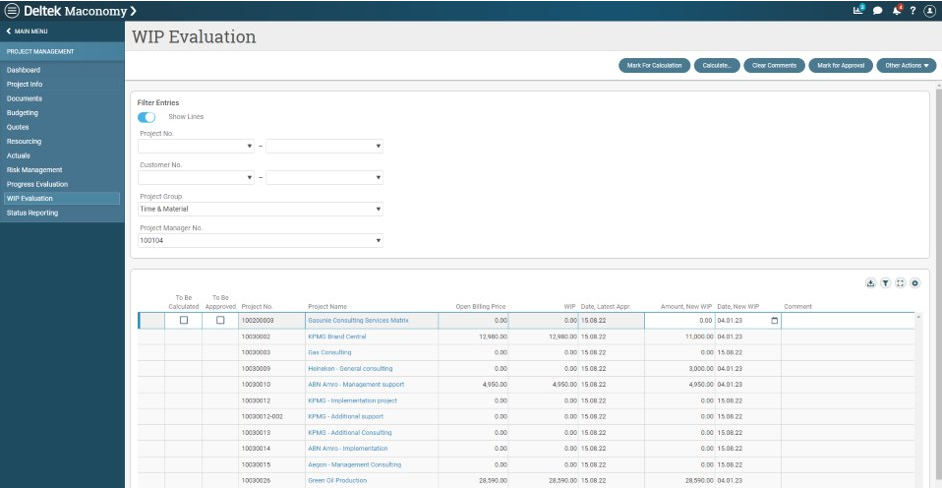
The progress evaluation is the input at month end for the Revenue Recognition processing – for Fixed Price projects based on the percentage of completion.
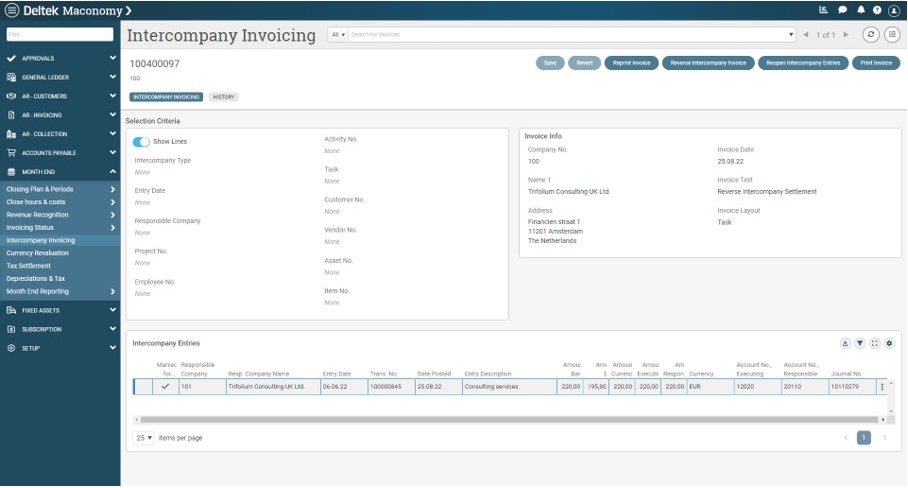
Manual overrides of WIP evaluation on time & material projects is also available.
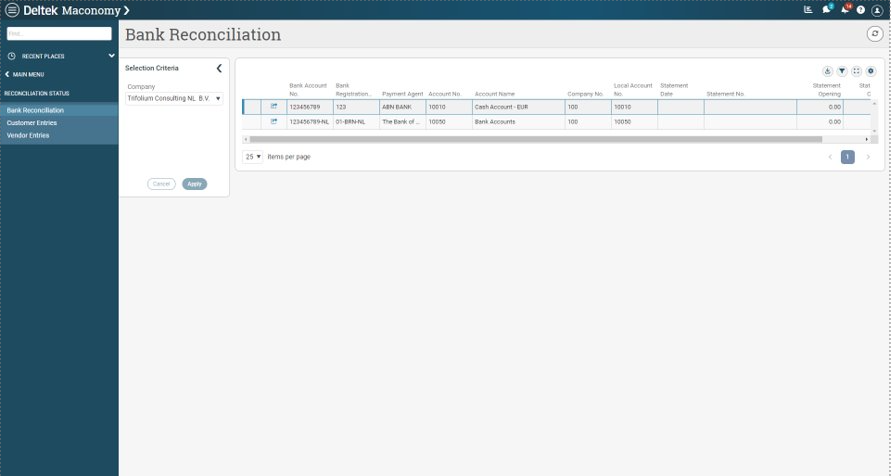
Intercompany invoicing allows simplified invoicing and reconciliation of intercompany transactions.
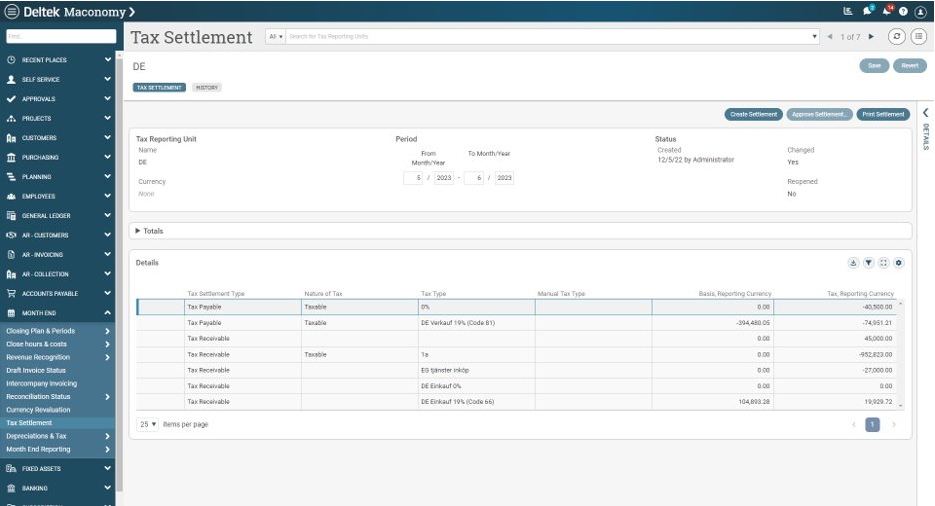
Reconciliation spaces are available for bank, customer and vendor entries.
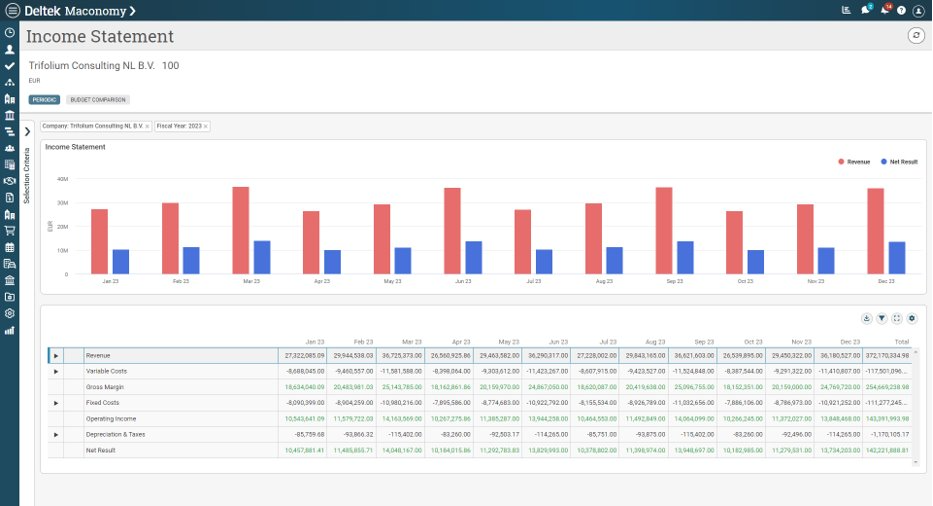
Tax settlements can be prepared and printed for all relevant tax entities in your system.
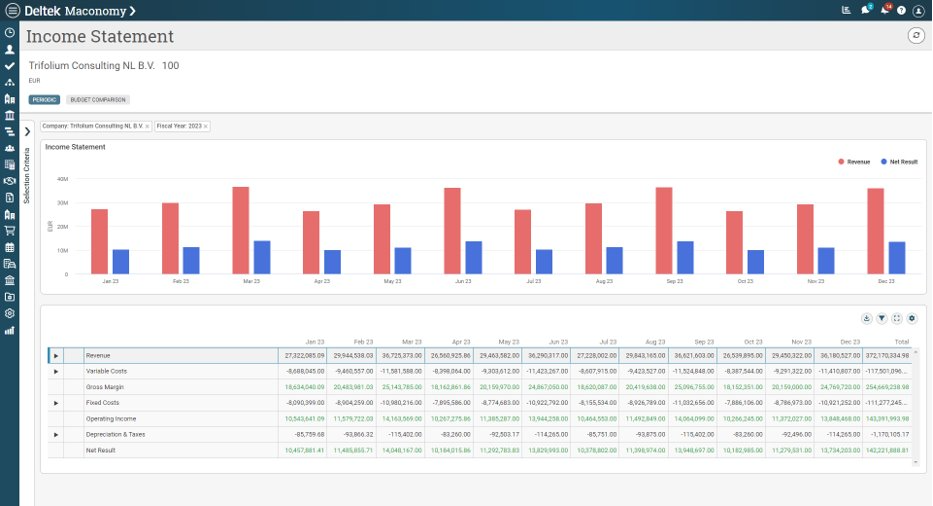
Income Statement & Balance Sheet dashboards are available, including filter capabilities and drill down functionality.

